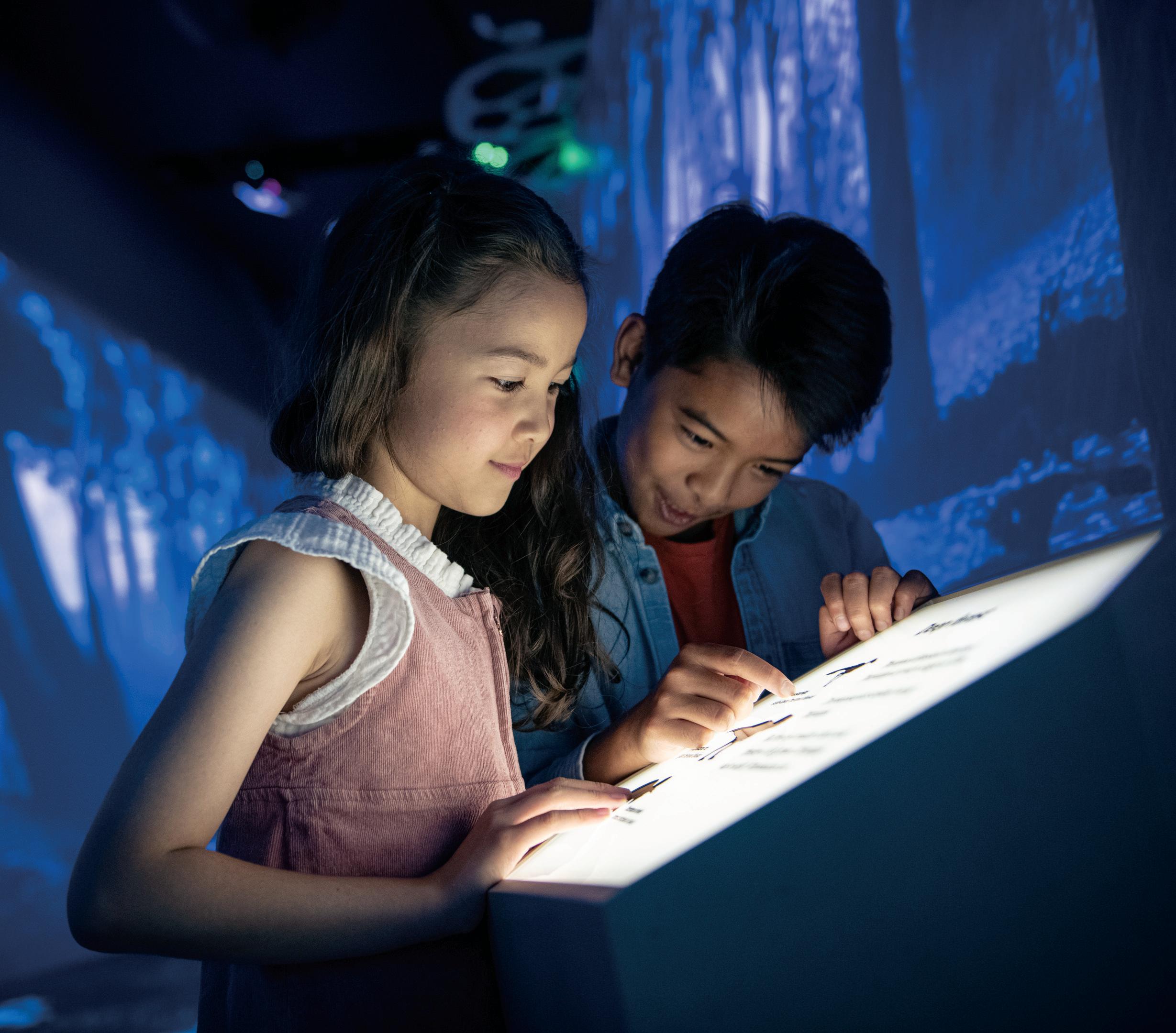











Our Classmate® range of school bag & hat hooks, offer a durable, safer alternative to sharp metal bag & hat hooks.

The Classmate® range of bag & hat hooks, now four great designs and a wide range of colours to choose from. Suitable for installation indoors or out.
All New Stowmate® Aluminium BagTrac Wall Mount Rails, designed specifically for use with your Safehook Ihook products. Stowmate offers End-Users and Specifiers a smarter, safer way to wall mount bag and hat hooks.



or call 07 3511 1668

School News is distributed to primary, secondary and intermediate schools throughout Australia by Multimedia Pty Limited.

The views and images expressed in School News do not necessarily reflect the views of the publisher. The information contained in School News is intended to act as a guide only, the publisher, authors and editors expressly disclaim all liability for the results of action taken or not taken on the basis of information contained herein. We recommend professional advice is sought before making important business decisions.
The publisher reserves the right to refuse to publish or to republish without any explanation for such action. The publisher, it’s employees and agents will endeavour to place and reproduce advertisements as requested but takes no responsibility for omission, delay, error in transmission, production deficiency, alteration of misplacement. The advertiser must notify the publisher of any errors as soon as they appear, otherwise the publisher accepts no responsibility for republishing such advertisements. If advertising copy does not arrive by the copy deadline the publisher reserves the right to repeat existing material.
Any mention of a product, service or supplier in editorial is not indicative of any endorsement by the author, editor or publisher. Although the publisher, editor and authors do all they can to ensure accuracy in all editorial content, readers are advised to fact check for themselves, any opinion or statement made by a reporter, editor, columnist, contributor, interviewee, supplier or any other entity involved before making judgements or decisions based on the materials contained herein.
School News, its publisher, editor and staff, is not responsible for and does not accept liability for any damages, defamation or other consequences (including but not limited to revenue and/ or profit loss) claimed to have occurred as the result of anything contained within this publication, to the extent permitted by law. Advertisers and Advertising Agents warrant to the publisher that any advertising material placed is in no way an infringement of any copyright or other right and does not breach confidence, is not defamatory, libellous or unlawful, does not slander title, does not contain anything obscene or indecent and does not infringe the Consumer Guarantees Act or other laws, regulations or statutes. Moreover, advertisers or advertising agents agree to indemnify the publisher and its’ agents against any claims, demands, proceedings, damages, costs including legal costs or other costs or expenses properly incurred, penalties, judgements, occasioned to the publisher in consequence of any breach of the above warranties.
The Multimedia Pty Ltd team acknowledges Aboriginal and Torres Strait Islander peoples as the First Australians and Traditional Custodians of the lands upon which we gather, work, and publish. We want to pay our respects to Elders past, present, and future, who continue cultural, educational, and spiritual connections to Country. © 2023 Multimedia Pty Ltd. It is an infringement of copyright to reproduce in any way all or part of this publication without the written consent of the publisher.
Pty Limited
PO Box 1080, Noosaville BC, Queensland, Australia 4566 Phone: (07) 5440 5322 Fax: (07) 5604 1680 mail@school-news.com.au school-news.com.au
EDITOR, Gemma Easton editor@school-news.com.au
INDUSTRY REPORTERS
Mandy Clarke, Naomii Seah, Sarah Davison and Shannon Meryerkort.
PRODUCTION, Richard McGill
ADVERTISING, Pip Casey advertising@school-news.com.au



CONTRIBUTORS
Ryan Martin, Carole Gardiner and Solene Cathalan. KEY
Seeing the recognition on the face of a child who has finally ‘got’ a concept, or the joy that participating in a sporting team or musical group can bring a student is deeply satisfying. Knowing you have played some small part in shaping the minds of a cohort of young people is astounding. The cost of teaching, though, is on the rise. Mentally, emotionally and physically, the demands are ‘on teachers’ and all school sta are increasing. In our Special Report, we examine the rising cost of teaching, and what can be done to ease the burden on our already exhausted educators.
In this edition, Ryan Martin, Principal at Macleay Vocational College (MVC) has contributed the Principal Speaks column. Though he didn’t enjoy school when he was younger, Mr Martin loves his


role at MVC. A Special Assistance School on Dhungutti Country for students from the Macleay Valley, the school provides a flexible learning environment that supports young people to re-engage with education, experience success, and build the confidence to explore future pathways beyond school. Mr Martin champions sta wellbeing, and ensuring best outcomes for all in the MVC learning community – students, teachers, families and carers, and other school sta .
Our profile this term focusses on HEAL and trauma informed art therapy. Operating in schools throughout Queensland, the HEAL program helps students with traumatic pasts engage in the schooling system. Many HEAL participants are refugees, and have fled war and other atrocities. Through art therapy, they are provided with the tools to cope mentally and emotionally, and to process their past trauma.
External learning has great wellbeing benefits for sta and students. We explore the improved learning outcomes experienced through time outside the classroom, as well as ways to take learning outside in your school. We are fortunate to have a wealth of excellent museums to visit across Australia. Our feature


on exploring museums for schools highlights some opportunities available to bring history and culture to life at a local museum. As we approach the halfway mark of the school year, I hope you are all travelling well. There is no quiet time in schools, and the pace can sometimes feel relentless. Though it may not always feel like it, the work of all school sta – teachers, principals, librarians, groundskeepers and other non-teaching sta — is highly valued. I know you will all continue to support each other through the challenges, and celebrate the triumphs. Go gently with yourself, and your colleagues this term.
The School News team acknowledges Aboriginal and Torres Strait Islander peoples as the First Australians and Traditional Custodians of the lands upon which we gather, work, and publish. We want to pay our respects to Elders past, present, and future, who continue cultural, educational, and spiritual connections to Country.

COVID restrictions and the rapid move to online learning, followed by years of increasing workloads, and staff shortages has left many teachers feeling overwhelmed and burnt out. Prioritising teacher wellbeing has been brought into sharp focus, but has done little to stem the tide of people leaving the profession.

Now, rising cost of living pressures are placing even more strain on our already stressed teachers, and the education system. This is having an adverse effect on our teachers, but also on students.
Around the country, teachers are lobbying governments in their state for better pay and conditions. The New South Wales Teachers’ Federation said that wages for teachers in that state have effectively remained the same for the past ten years, and teachers are now one of the lowest paid professions in the state.
NSW Teachers Federation president Angelo Gavrielatos said: “Teachers’ salaries are uncompetitive in a tight labour market and don’t reflect the skills and expertise of teachers or the increase in the volume and complexity of their work.

“If we don’t pay teachers what they are worth, we won’t get the teachers we need.”
Teachers in Tasmania held strike action in March, the third in a series of stop work actions since September 2022. A fourth strike in March was avoided, with the Rockliff government making an offer to AEU members, which delivered
significant member benefits and met many of the objectives developed by educators.
While the offer was a welcome win for educators, President of the Tasmanian branch of the AEU, David Genford said it would not solve the state’s education crisis. “We will continue to hold our Governments to account until Tasmania’s teacher shortage is fixed and every school and child is funded to the national minimum standard,” he said.
With understanding of the value, complexity and importance of teachers’ work post-COVID, the South Australian branch
of the Australian Education Union (AEU) is lobbying for a pay increase to adequately reflect their work.
After negotiations with education sector representatives, the Victorian Government Schools Agreement (VGSA) came into effect on July 25 2022. The agreement includes several provisions to improve working conditions for teachers, including a onehour reduction in face-to-face teaching time in 2023, and a further 30-minute reduction in 2024; the employment of an additional 2000 teachers; and salary increases through instalments classification adjustments, and allowances.
Families are facing rising interest rates and rental increases, fuel and electricity price rises, and inflationary pressures resulting in higher prices for basic groceries and other essentials. In this environment, ensuring children have the necessary resources and uniforms to attend school can be challenging.
Financially, mentally, and emotionally, the cost of teaching in Australia is on the rise.© Adobe Stock, stock.adobe.com
The Futurity Investment Group Cost of Education Index outlines the real cost of education throughout a student’s life. Those who choose to send their child to an independent school will of course have to pay school fees, though in some states and sectors this represents only around five percent of the total cost of education.
Futurity Investment Group Executive, Kate Hill, said the total cost of education has risen at nearly double the rate of inflation over the past decade. “School fees, outside tuition, school camps, transport, uniforms, electronic devices and sports equipment are demanding a far greater share of the family budget than in the past,” Ms Hill said. “More than ever, the costs associated with education are placing more of a burden on Australian families, who are already stretched by the spiralling cost of living and rising interest rates. With less discretionary money to spend, it’s going to be a challenge for some families to pay for education.”
An estimated 83 percent of public-school teachers spend their own money on essential school supplies for their students, spending an average of $874 throughout the year. This means collectively, teachers are spending up to $150 million of their own money each year on classroom resources for their students.
Charitable organisations, like Western Australia’s Give Write are helping to ease this burden. The organisation accepts donations of excess stationery items, which families have left over at the end of the school year. These are then provided to teachers free of charge, helping them to ensure disadvantaged students have the supplies they need to participate fully in their education.
Stationery Aid collects, sorts, cleans, renews and then donates excess and used education resources to disadvantaged students to start the school year.
Aiming to relieve poverty and misfortune for students in times of hardship and financial stress, the organisation relies on monetary donations to
help purchase and supply booklist items to students.
Reverse Garbage, which was founded by a group of teachers, offers a similar service. Reclaimed stationery and other items are made available to the public at a low cost, easing the financial burden for both teachers and families.
Uniform costs, and the inability to purchase the full and correct school uniform, has been shown to impact attendance and enrolment among pupils from lower income families. Data from the Australian Bureau of Statistics (ABS) revealed that in 2022, the secondary school retention rate decreased to 80.5 percent in 2022, down from 83.1 percent in 2021. Teachers, and schools, are absorbing the cost of school uniforms, or adjusting policies to ensure clothing does not become a barrier to accessing education.
In the past year, 1.3 million children in Australia lived in severely food insecure households. Nutritious food, including a healthy breakfast, has been shown to positively impact outcomes for children, including physical and mental health, social skills, concentration, behaviour, attendance and academic outcomes. Free breakfast
programs for students are becoming common in many schools, ensuring all students start their day of learning with a full tummy.
Supplementing the cost of essential resources and supplies for students is impacting school budgets. Provisioning students with food, uniforms and the tools for learning diverts funds from other items, like upgraded sport, arts or classroom facilities, school incursions and excursions, and in some cases professional development opportunities for staff.
School funding is also an issue. Data from the 2023 Report on Government Services (ROGS) found that the majority of school students, including the vast majority of students from low socio-economic backgrounds, are educated in public schools, but that almost no public school is fully and fairly funded to cater for students.
AEU President Correna Haythorpe said that inequitable school funding is impacting students. “Improving educational outcomes for all students cannot be separated from school funding. Equitable school funding is a crucial piece of the puzzle,” she said. “Public education plays a crucial role in
educating the vast majority of Australian students. It is high time that this system is fully funded to ensure that every student has access to high quality education and equal opportunity, irrespective of their circumstances or backgrounds.”
Unemployment nationally is sitting at around 3.5 percent, just up from a record low of 3.4 percent in September 2022. Despite this, attracting and retaining teachers is difficult, with a shortfall of 4000 secondary teachers projected by 2025.

This may be in part caused by cost-of-living pressures, which present a significant hurdle to students considering entering the teaching profession. Trainee teacher placements in Australia are not paid. This means aspiring teachers need to take time out from their paid employment to complete practicum requirements. For many young people, this is simply not sustainable. Despite the demands of their jobs financially, mentally, and emotionally, many teachers enjoy their job and remain committed to the profession. A survey by Monash University researchers reported that 80 percent of respondents felt a strong sense of belonging in their profession. Relationships and connections with both other teachers and students was integral to this.

Addressing these problems for teachers will not be easy. Though exacerbated by the recent pandemic, many issues in the education sector have been prevalent for years. Meaningful dialogue between governments, educators and the community is needed to facilitate lasting reform.
Attracting and retaining well-educated, enthusiastic, and diligent teachers should be a priority for everyone. They are, after all, leading the next generation of young Australians, ensuring they can become happy, well-rounded and meaningful contributors to our society. Without excellent teachers, more than our education system will suffer.
Macleay Vocational College (MVC) is a Special Assistance School on Dhungutti Country for students from the Macleay Valley. We provide a flexible learning environment that supports the young people in our care to reengage with education, experience success, and help them build the confidence to explore future pathways beyond school.

It’s quite ironic that I ended up working in education- I didn’t enjoy school and can’t say I was a great student. I was bored easily, and I left school without much of an idea about what I wanted to do other than working with my father who was a builder.
After trying a few different things including demolition, roof plumbing, gym instructor, I eventually found myself in teaching. In my first year of teaching, I ended up running a
behaviour management unit. I started working with kids who were getting into trouble all the time and I started looking at why these students weren’t engaging. Was it the subject, the teacher or was it something external to school? What was it that was stopping these kids from engaging in school?
So, for the past 15 years I’ve gravitated toward leadership positions in schools where health and wellbeing are the starting points to re-engage students in education. I love working in this space, and my competitive nature pushes me to think outside the box to ensure that when other people have failed to re-engage these young people with school I think, ‘why can’t we get them to the end of year 12? Let’s give this one more crack!’

Being a special assistance school, many of our students are not living with mum or dad. They might be living with grandparents, other family members, in foster care, ‘couch
surfing’ or in the youth justice system. For whatever reason, they have all struggled to thrive in mainstream school and are at risk of disengaging from education.
At MVC, we provide that opportunity for them to complete their education and support them as they develop the confidence to pursue employment or further study. All of our students have experienced various levels of trauma, our teaching staff work really hard to provide a supportive and safe environment that is trauma informed. This is supported by the Berry Street Education Model that all staff have been trained in. You won’t hear a raised voice at our school, we focus on providing a calm environment even if we don’t feel that way. We are really strong about that being our best approach when things get challenging. The ‘duck in a pond’ analogy gets spoken about a lot, calm up top even when you are kicking like mad below. Our barometer for student
success is whatever allows them to find something meaningful beyond school. We don’t get it right 100 percent of the time, but that can always be an aspirational target. HSC completions are fantastic, but there are other targets that are just as important. Last year we had 20 students complete Year 12 and 15 of those were employed when they graduated with another three heading to university. We really celebrate that stuff.
To ensure these exit outcomes at Macleay Vocational College, the job extends beyond the bounds of the classroom. This can often mean helping students with appointments, accessing support services outside of school, dropping food off to families and finding safe and secure accommodation for students in need. Our school provides a wrap-around level of care for our students. This is really draining on staff and is why I am so passionate about our staff looking after their own health and welfare.
Teacher burnout is a monstrous problem, and it is not just young graduate teachers leaving the profession, it is across the board. The statistics around this issue are alarming with some reports suggesting half of all teachers have considered leaving the profession. I would contest that this figure might be much higher in schools in disadvantaged communities. The workload placed on educators is overwhelming, coupled with difficult students that without the tools to cope, things can spiral downward pretty rapidly.
The unique and challenging nature of our school means staff often observe behaviours that can be confronting and upsetting. There is a mental toll as a result of this that we carry as a burden outside of school.
To help staff decompress, our school has thought deeply at how we address this. With the

support of the school board, we now offer additional support and work/life flexibility.

MVC provide staff with a Mental Health Day each term, so they can take a day for themselves when they need it. Self-care is something we value and believe our teachers need to understand and put into practise.
In addition, we also offer flexibility for staff to work from home when permissible. There is this old attitude that teachers have to be in their classrooms from 8am until 5pm, and I don’t think this idea is helpful. I trust our staff to do their work, and if they need to work from home when they don’t have classes or leave early to organise the family then we as a school need to be flexible to make this happen.
It’s not a comprehensive program and doesn’t answer all the problems that teachers are
facing, but these things have been well received by staff and have gone a long way to reducing staff absenteeism. We have more plans in place for staff in the future, but believe this is just a starting point. I’d rather people take a day off for themselves before they work themselves into the ground and have to take a week off on sick leave.
Obviously, we have some unique challenges at Macleay Vocational College, but I believe staff wellbeing and self-care should be considered a priority for all educators. In addition, having




a support network of people at school or outside the school who you can talk to and decompress is incredibly important.
This self-care/wellbeing approach is not something I personally have perfected yet, but the key word here is ‘yet’. I’m trying to demonstrate a better way and it is a goal. I am encouraging staff to take the first steps towards improved wellbeing as well.
‘Take the first step in faith. You don’t have to see the whole staircase, just the first step.’ – Martin Luther King
 By Shannon Meyerkort, Industry Reporter
By Shannon Meyerkort, Industry Reporter
Wilsonton State School, in Toowoomba has become the first primary school to complete an expressive arts therapy pilot program to help children from a local refugee community heal from trauma.


Located in the Refugee Welcome Zone of south Queensland, Toowoomba has received large numbers of refugees over the past decade, including the Êzidî community from Northern Iraq who have fled persecution and genocide by ISIS.
The HEAL arts therapy program aims to provide young students with a way to express themselves as part of the healing and recovery process.
The program is overseen in schools by QPASTT (Queensland Program of Assistance for Survivors of Torture and Trauma). Co-CEO, Sally Stewart, explains the program’s relevance: “Art, music and play are the tools that children and young people
use to express themselves and learn about the world. Expressive arts therapies are sensoryfocused and can be non-verbal, making it easier for children and young people to convey their experiences, thoughts, and feelings particularly if they are also learning English”, The program has also supported teachers and school staff to understand the context of developmental and refugeerelated trauma and its impact
on children’s ability to learn and thrive at school.
“Refugee trauma, and the experience of having to flee war and persecution, can seriously affect the healthy development of children and adolescents,” Ms Stewart said. “[It] can disrupt the foundations of attachment, behaviour and learning. If a
child is experiencing trauma symptoms in the classroom, they are often not able to focus on learning. If children are not supported to recover from this trauma, they can struggle at school for the length of their education and unfortunately take those struggles with them through to adulthood.”
Ann Rebgetz is the Principal of St James College, a secondary co-educational Catholic College where around 65 percent of the 570 students are culturally and linguistically diverse, and approximately 45 percent come from a refugee background.
“Prior to their arrival in Australia, many students have experienced multiple traumatic events,” explains Principal Rebgetz. “Students who arrived by boat and have been Asylum Seekers are very disadvantaged – they have to deal with the trauma of detention, as well as leaving countries. In addition, futures are so uncertain and that has a very negative impact – it is hard to talk careers when one is not allowed to work or attend university. Other students have experienced long-term deprivation and poverty whilst living in refugee camps or fleeing their homes.”
The impact of this trauma on students can manifest in different ways in the classroom, including emotional dysregulation, withdrawing, anxiety, hypervigilance, agitation and risk-taking behaviours.




Students may also find it difficult to develop trust with teachers and other authority figures or experience behavioural difficulties, impacting their ability to make friends.



Schools, therefore, are an ideal location to offer early interventions and support services because it removes the barriers of cost and transport.


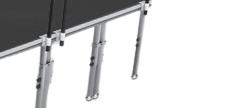


Sally Stewart explains: “HEAL’s school-based program ensures there is a therapist embedded in a school to support refugee and other young people, as part of their wellbeing team. They can screen students and work with teachers and school staff to refer students into the HEAL program. Students can also self-refer into HEAL. Schools generally fund a HEAL program in their school from their wellbeing budgets and HEAL undertakes fundraising to supplement program costs.
“We know that students from refugee backgrounds benefit






from specialist and earlyintervention therapy in schools, supporting them to develop positive coping strategies to deal with the stress and emotions that can result from trauma, and to build positive interpersonal relationships with their teachers and peers. The more support and early intervention students can get, and the more training and upskilling that educators can acquire, the better the outcomes will be for students and our education system as a whole.”



























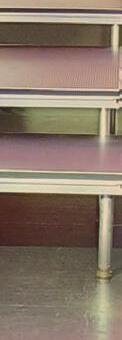






HEAL was founded in 2004 by teacher and arts therapist Jane Griffin OAM at Queensland’s Milpera State High School, a receiving school for refugee and migrant students before they transition to mainstream state schools. On placement at Milpera while studying her Fine Arts degree, Jane noticed that during free-drawing time, students were depicting scenes of war and horror. After graduating, Jane undertook post-graduate studies in arts therapy to become a registered art psychotherapist and established the HEAL program with the support of then principal, Adele Rice AM. HEAL has now expanded into
the current program across three Brisbane schools.
Julie Peel, Principal of Milpera State High School, has been associated with the HEAL program for more than 17 years. She explains how important the program is to the entire school community: “In any one week the HEAL team provide invaluable advice to our community about the ways to work with traumatised students. They support the

management of difficult student behaviours; they work as advocates for the students, enabling us to solve problems quickly through restorative justice and building empathy for classmates. On an individual level they provide therapy to really high need students, making them available for learning through improved wellbeing. They have a HEAL room which is open at lunch time, providing students with a safe space to sometimes just “be”.”

HEAL therapists present professional development to school staff a number of times in the year as well as visiting classrooms to support teachers to gain a deeper understanding about the students and the ways they can assist.
Ann Rebgetz, Principal of St James College, describes the HEAL program as providing a “protective wrap around students, enabling them to step forward, feel special and develop a skillsset and acceptance of self.”
She adds: “The HEAL program has assisted school staff to develop greater awareness of the challenges that face refugee students entering the Australian school system for the first time. The program provides a safe space for students to access should they become dysregulated in the classroom [and] the support of the HEAL therapist is particularly important when staff are feeling overwhelmed by the behaviours of a student and are unsure on how to move forward.”
Several studies and reviews have shown that creative arts therapy can significantly reduce depression and anxiety symptoms, negative mood and other symptoms arising from experiences of trauma.


HEAL self-funded the pilot program in Wilsonton State School, and despite the small sample size (seven students), results showed that art therapy helped improve student confidence, behaviour and wellbeing as well as positively influencing their ability to make friends outside of their cultural group.


Sessions vary depending on the age and needs of the child, but often involve ‘checking-in’ with the student, discussions or drawing to describe their current state of wellbeing, play or yoga-based activities, movement with sport or cultural dance and then art-making following

a particular prompt or directive. After discussing the ideas in the picture, the therapist will check-in again to ensure the child feels ready and able to return to class. One classroom teacher reported: “The improvement I have seen in my Year 6 student who participated in the HEAL program has been phenomenal! His level of self-esteem and confidence has grown exponentially. He is more engaged in the classroom and confidently takes academic risks. He is more resilient and is able to emotionally regulate himself and solve problems. He is focused, actively listening and asks for help when needed.”
Programs to support young refugees vary widely across the country but all states have access to a specialist trauma recovery agency, as part of the Forum of Australian Services for Survivors of Torture and Trauma (FASSTT). Many offer professional development and training that is trauma-informed, while some offer specialised programs to support schools.

“If schools cannot offer specialist supports like HEAL,” Sally Stewart said, “we recommend offering professional development for staff to be able to recognise the signs of trauma in children and young people and explore what referral pathways might be available to local services.”
Ann Rebgetz adds that schools can engage cultural liaison staff, collaborate with families, and train teachers to develop coregulation skills so they can help students settle when distressed. “Each student should be able to identify their ‘support crew’ – those staff that know them and can offer unconditional positive regard in times of stress.”
“It is in everyone’s interest to ensure refugee children and young people can access support to ensure their experience of trauma is not a barrier to learning and they have the same opportunities as their Australian peers to thrive at school and beyond,” Sally Stewart said.
To support its fundraising efforts, HEAL will be hosting a benefit concert at QPAC in June.






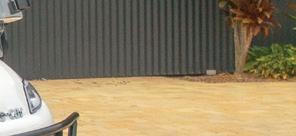


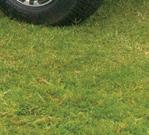





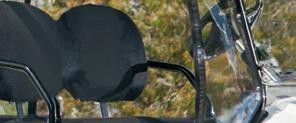


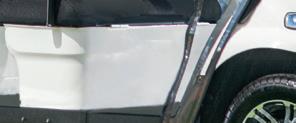









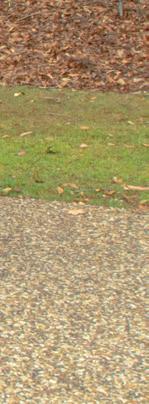

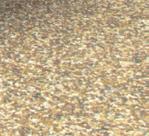






















 By Gemma Easton , Editor
By Gemma Easton , Editor
As education changes and evolves, the library remains one of the most important spaces in a school.
Of course, access to books remains integral to education for children of all ages. Books help children develop early literacy skills, understand history and culture, help to develop traditional research methods, and of course, foster a love of reading.
The modern school library, though, is home to more than just books. Technology, and the way students are taught and learn is changing. Access to digital resources and technologies is integral for all students. Increasingly, school libraries are becoming dynamic learning hubs, giving students access to technology and providing space for diff erent activities and learning styles.
School libraries, digital literacy and reading engagement are interdependent. The school library and staff play a critical
role in helping to create a school culture that supports and encourages reading for pleasure, and digitally literate students. Digital literacy, in turn, needs proficient and engaged readers. School libraries are most eff ective, then, when they combine specialised staff, resources, and space. For students who might otherwise be disadvantaged,
the library can provide the resources, technology, and stories they need. Books for reading or reference, as well as computers with internet access and digital learning tools can help ensure all students have the tools to learn. Libraries are a place where all are welcome, providing a safe place to share stories and ideas; they off er a haven for
young people, and a chance to escape to another world. With the variety of activities taking place in the library, there is often a need for diff erent zones. Quiet areas for independent reading or study, as well as space for collaborative group work, meetings, and community gatherings are just some of the zones libraries need. Specialist meeting rooms with access to interactive smart screens can replicate realworld spaces school leavers may find themselves in. Helping students become proficient in using this type of technology is essential to ensure they are ready for work or further study when they leave school.
Modern school libraries act as a meeting place for students, teachers, and in some instances, the community. The space needs to remain flexible to accommodate diff erent groups, whether they be engaging in learning activities or meetings. The ability to easily transform a space is invaluable in a busy school environment. As with other flexible spaces in a school, furniture on wheels or that can be easily moved is key.
The modern school library is home to more than just books.Images courtesy of Furnware


Building or thinking of redesigning your library?
School News asked some industry experts for their tips on creating the perfect space.
When designing the layout for a library, Jaime Hallet from Sebel considers modular furniture important, as it allows educators to create sett ings for all ages. “Products selected should be fun, flexible and comfortable. Easy to move modular seats that can be configured in a multitude of ways can be used to create breakout spaces for collaboration and informal learning. Pulling apart modular seating sett ings can also create single seating that helps with individual learning.
“Furniture can assist with creating zones within a library for diff erent modes of learning. Low level seating like floor cushions and mats can be used as a fun and comfortable way to create breakout areas without compromising on space. Modular furniture, like soft seating, paired with tables that have castors can be easily moved around the room to create an environment for either collaboration or individual learning.

“Tables that include several diff erent shapes that fi t together for group learning or can breakout on their own into individual learning are popular among both junior and senior levels.
“Schools are choosing bright coloured furniture or patterned fabrics to bring fun and engagement into the learning environment. They are also going for vinyl finishes in vibrant colours as they are easy to clean. We always recommend planning what happens in the space before selecting the furniture products that are right for you,” Ms Hallet said. When designing a new library or refurbishing an existing one, Jeff Morren, Managing Director of IntraSpace said there are some common points to consider.

Firstly, Mr Morren suggests you should consider aesthetics and function. “Deciding on the look
and feel of the area needs to be coupled with how functional and practical it will be for users. Look at existing library spaces that may suit your requirements then incorporate your own design into the plans. This makes it easier to convey your ideas to the experts.

“Volume or capacity of books is the next thing to consider. Do you want the same volume of books, are you culling the collection, or do you neeed to future-proof the space to allow for growth? This provides ideas of how much shelving you’ll need.”
Thirdly, Mr Morren said schools should consider the use of space and traffic flow.
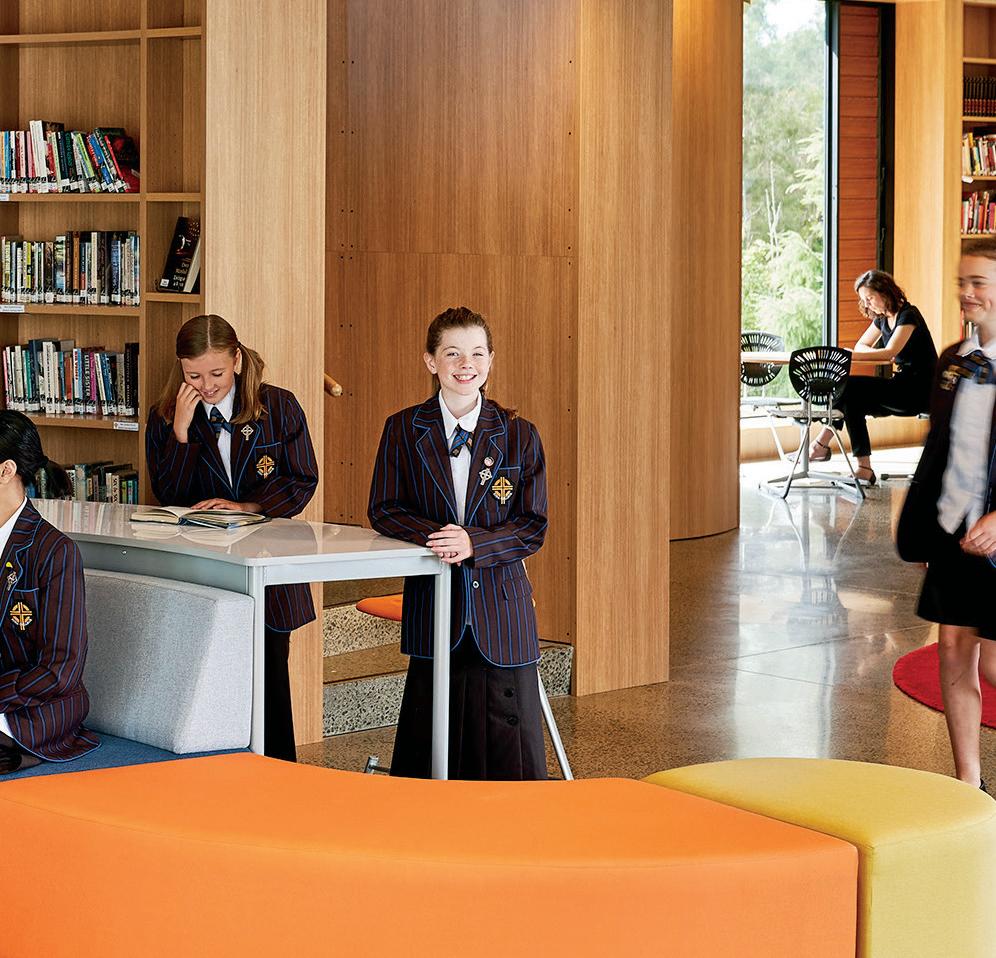
support better learning outcomes.

We work in close partnership with you to deeply understand your school’s unique environment, and design solutions to meet your performance goals.















“Creating smaller reading and group study areas can eff ectively break up the space. Mobile shelving allows for efficiently rearranging to suit varied activities.
“Finally, you will need to decide whether to DIY or seek the pros. After your initial research on the above considerations,


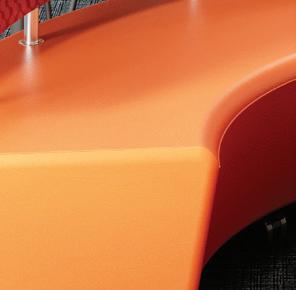
it is best to seek professional advice from library specialists. Not only will this save you time but also help maximise your budget to get eff ective, efficient, and enduring results.”
Furnware Product Manager Christine Shing said libraries are transforming as education evolves. “Modern libraries


are places of experience and discovery with centrally located resources and easy technological access. The careful combination of various design elements brings a modern library vision to life.
“Some key aspects are colour, light, furniture, noise levels and connectivity. Soft furnishing,



for instance, brings colour and comfort to the library and helps to soften noise. In a lively library, acoustics become very important – ceilings, walls, floors, and furniture all have a role to play in dampening sound.





“Choosing furniture of diff ering heights, innovative shelving solutions and combining hard surfaces with soft materials will help create zones that naturally att ract students to engage in specific activities. For digital discovery, ensure easy online access throughout the library.
“Great libraries make everyone feel welcome. Mobile furniture that is flexible and agile accommodates multiple activities and supports students wherever they like to learn.
“Soft furniture, floor cushion pads and study nooks are perfect for creating focus or social zones. Tables with whiteboard surfaces encourage collaborative learning, and Lego tables with built-in storage keep everything tidy.


“For flexible seating, there is a trend towards off ering various seating options and heights,












from cushion-type floor seating to sitt ing-height student chairs, to modular couches and ottomans, through to high stools. This creates a dynamic environment providing options for all learning activities and giving students a greater choice of where and how they best like learning.”
Annabel Parlett a from Resource Furniture said libraries should utilise natural light as much as possible. “Large windows with beautiful views, are best for quiet reading, breakout
or study areas. Students are more likely to stay and read or study in the library if they have a cosy spot near a window.
“Keeping shelving low at the front of the library creates great visibility throughout the library space. High shelving can make the library look smaller and dull in some areas. It also provides staff a great line of sight,” Ms Parlett a said.





“Mobile library shelving, can be configured to create nooks and study spaces, and can
also help to reduce noise. This is useful if a class is working in the library, while other students are studying independently. It also provides flexibility to open up the space to create larger areas.
“Mobile flip tables are great for older students. They can be used for quiet study group collaboration. A top tip would be to include table sizes that can be grouped together. For example, 1600 wide by 800 deep. This size is perfect for two students but can also be
clustered together in groups for several students. Mobile tables can also be flipped and stacked to the side if the space is required for other activities. “Organic shapes complementing the surrounding environment and complementary colours have been recent design trends, especially blues and oranges for junior primary areas. Products such as round ottomans and low stools that can easily be moved and reconfigured have been very popular.”
Refreshing a tired library or designing a new one in 2023?

IntraSpace works with education providers across Australia to design, supply, and install furnishing solutions that maximise the best use of library space. We can refresh floor layouts via flexible shelving solutions. With a wide range of products and services on offer, IntraSpace works with you to design and build effective and efficient learning spaces.

IntraSpace offers complimentary consultation as an opportunity to workshop ideas with you on-site and generate plans for an innovative library space to suit your needs.
Get in touch today!
Having made the step from fulltime librarian to working with library software, it’s been amazing to see how different librarians work. So many of our colleagues across the country are firmly establishing the library as a cornerstone of their school’s learning journey.
In this article, I want to inspire you with some of the best practices I’ve seen in action, and the features of library software that make it possible to enhance and improve literacy throughout the school, and clearly demonstrate that a library is about so much more than just books!

Librarians have the skills to be involved in all areas of learning throughout the school. In fact, we have the power to extend kids’ learning beyond the library walls. We do more than just issue and return books, and I’m inspired by the librarians I see every day who are taking charge and getting the library involved with a wide range of topics right across the curriculum. Take these ideas as inspiration to try something new, or see them as a positive reminder that what you are doing is great for our students and your teaching colleagues.

Content curation:
Creating separate dashboards for curriculum and inquiry topics can bring together library and other online resources in one easy to find place. This
facilitates collaborative resource sharing between library staff and teaching colleagues.
Results:
• Gives students the chance to go beyond books and elevate their learning to the next level.
• Brings together all your physical and digital resources in one easy to use place.
• Builds your relationship with teaching colleagues through sharing of resources, generating reading lists for staff and learners, and improving awareness of library resources and services.
• Quick and easy to curate relevant resources, with the ability to copy between dashboards or even import a platforms ready-made dashboard.
With the quality of content found with a Google search now being more in question than ever, we need to teach smart and safe research skills. Search functions inside library software can help students find quality information
from trusted sources, extending a search for library resources to your subscription databases and free searchable websites.
Results:
• Helps your students find age appropriate and reliable information.
• Helps promote and make the most of your databases.
• Encourages searching in a safe way beyond the library’s physical resources.
Reporting goes beyond just finding the most popular books or stocktaking, it can also be a really powerful tool to help librarians and teachers find out
more about how our students are using all the resources that your library provides.
Results:
• Let your colleagues see what their class is reading or interested in.
• Identify what learners are searching for, so you can quickly and easily see what is most popular, to help guide purchasing decisions and collection development.
• Advocating for the library and the role of the librarian. If you don’t tell and show your stakeholders, they won’t know how well your library is performing.









We all know schools are busy places. Making things easier for staff, students and parents is always a priority.
An effective way to streamline processes is through school management systems. While commonplace in many schools, the constant evolution of technology and management systems regularly introducing new features, it may be time to consider if your school’s management system needs updating.
Generally installed as a software package to existing devices, school management systems can record and store a range of data including staff and student movement, and learning progress for individual students, or across subjects and cohorts. Communication details for students and their families, as well as enduring
permissions, wellbeing and pastoral information, and student adherence to codes of conduct can be captured.
Customising your system to suit your school’s needs will determine the types of data collected, who can access it, and for how long it will be stored.

Reports can be easily generated, spanning a student’s entire time at the school. Information may include assessment records, attendance reports, any siblings the student has, extra-curricular activities they are involved in and details of previous education.
Storing this information in hard copy would be challenging, and interpreting and comparing data sets would likely be impossible. Management systems, then, can save school staff time. Students will also benefit from educators having full and complete information regarding their learning and progress.
Regular communication between schools and families is paramount for good student outcomes. When parents can easily access information, they feel connected to the school and become more invested in their child’s education. School management systems
can incorporate parent communication, simplifying and targeting information to the parents who most need it.
With so many extra-curricular activities on offer at schools, the number of updates sent to parents can feel overwhelming. Customised parent communication, based on data collected by school management systems, ensures parents receive information relevant to their child. When information is relevant, parents are more likely to engage with it, and are less likely to miss important updates or information relevant to their student.
The health and safety of students while at school is paramount. School management systems can record important medical information, including allergies. A report can then be generated and distributed to all staff.
Knowledge of which students may have severe allergies or other medical conditions may assist staff in preventing medical emergencies before they happen.
communication between schools and families is paramount for good student outcomes.





Compass saves you time by combining all facets of your school management into a single platform, giving you a clear view of your school operations and student outcomes to make smart decisions.





Our intuitive platform connects your vital attendance, wellbeing and assessment data to provide powerful reporting and analytics to track student progress and ensure no child gets left behind. Trusted by over 2,200 Australian schools and providing unrivalled training and for your school however complex.




















Compass has provided the ability to manage student wellbeing, attendance and learning all within one program, with support all along the way.
Matraville Sports High School
School management systems make accessing and sharing this information simple and efficient. Quick access to files and extended storage of student information is important. Digital storage of data within a school management system ensures records can remain secure, even when school spaces are rearranged, or storage facilities are compromised by flood or fire. As files are centralised, school management systems do not rely on a few key staff members
having knowledge of and access to files; the configuration of your system can ensure all staff have access to the information they need, immediately.
Once installed, some initial training for staff in using the system may be required. School management systems, though, are generally user friendly and simple to operate. Ongoing support is generally offered by providers, ensuring staff have access to help when needed.
Cassie Martin, National Sales Manager at Sentral says it is important that school management systems offer flexibility to meet the specific needs of each individual school, regardless of the

school type, size, location and number of campuses.
“Some systems, for example, have a Wellbeing module which allows schools to collect data that’s relevant to them. If there is a particular focus at the school, or issue such as cyberbullying or truancy, the Wellbeing module can be configured to collect relevant information. The leadership team can then analyse this data to make meaningful and proactive decisions to address the issue. This can be as simple as identifying a problematic time of day and adjusting staffing or timetables accordingly.
“Schools can collect a range of data, data sets or data points across a student’s life cycle at school. This includes assessment, attendance, demographic, health and pastoral care data, which is all essential in providing a holistic view of the student. Most schools face difficulty in collating and accessing this information in a timely and efficient manner.
“Systems which automate the sharing of the desired information across teaching staff, students, and parent community decreases the need for multiple entries from staff members. ‘Role’ based configuration means that only staff who need particular student data to do their job will have access to it,” Ms Martin said.
With a range of options available for school management systems, School News asked some industry experts for their insights.Image courtesy of Sentral © Adobe Stock, stock.adobe.com















“School management systems can incorporate apps for parents. This simplifies processes for explaining absences, viewing academic results, and increases the engagement and visibility for parents surrounding their child’s school life.”
Neil Spence, Schools Engagement Manager at Compass believes that in today’s education landscape, whole school management systems play a critical role in managing complex operations of schools and improving results. “To be effective, these systems must be flexible and tailored to meet the evolving needs of schools,” Mr Spence said.
“One important area that school management systems can assist with is the collation of attendance, wellbeing, and assessment or reporting data. By organising this data in a cloud-based system, educators can more easily track student progress and tailor teaching strategies to meet individual student needs.







“Additionally, by using these systems, parents support their child’s learning by








receiving timely insights on their child’s academic progress and wellbeing.”
Mr Spence said implementing a new school management system starts with planning requirements, then building awareness
of products, completing a cost/benefit analysis and purchasing a system.




















“As best practice, during the purchasing stage the preferred vendor guides you all the way by outlining the rollout, negotiating face-to-face training and go live
date, and explaining all support options. Partnering with an experienced and trusted vendor will successfully transition your school to a new whole school management system, leading to efficiencies and improvements for your school and community.”

Whether





One important area that school management systems can assist with is the collation of attendance, wellbeing, and assessment or reporting data.
Dr Kiki Tanousis from Xuno said upgrading to a simpler, more efficient school management system is the best option for schools. “Schools often find themselves with monolithic school management systems that do lots of things but do only a few of them really well. So, their IT departments often have to add on specialist software to get the versatility and depth that they and their communities need. Specialist timetabling, specialist reporting, specialist analytics, comms, financials, health and safety and the like. “One would have thought that this would allow for great versatility, but it doesn’t really seem to work that way. Schools can find themselves ensnared by and entangled in, their
monolithic system, limited in their ability to link with other systems and in some cases, vulnerable to “captive customer” price rises,” Dr Tanousis said.

“But things are changing quickly. “Open SIS” systems are fighting back by creating clusters that are truly a network of specialist products. This means that schools can have a dispersed management system that enables them to pick the best of the best.



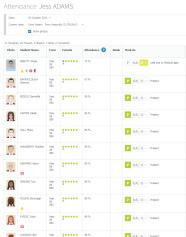


“Secondly, with expert data extraction, conversion and transformation tools, rival systems can be forced to work together, making the ability to add on specialist products (or even kick out legacy monoliths) that much easier.”










“Attentional and motivational components of emotion have been linked to heightened learning and memory. Hence, emotional experiences/stimuli appear to be remembered vividly and accurately, with greater resilience over time.”
Put simply, linking emotion and learning improves our ability to retain what we’ve learned.
What’s more, game-based learning optimises the brain’s ability to process new information from a range of sources.
• audio-visual presentations
• minimized bites of schematized information
• short time lapses
By INTEGRATE AVWe all love to play, from the time we’re infants. Now, gamification has found its way into nearly everything we do, from collecting coffee shop stamps to tracking learning module progress. Why is gamification so popular? Because it works. Why does it work? Because it triggers powerful emotions.
Delight. Anticipation. Determination.
And these emotions can have a substantial effect on learning.
Game-based learning means that we use games to enhance the learning experience. Playing games holds learners’ attention in engaging and interactive ways, making it easier to learn new things or build understanding of concepts.

Recent research reveals how emotions heightened by gamification support learning.
• repetitive patterns
Because the consequences for getting something wrong in a game are minimal, games provide students with the opportunity to embrace wrong attempts and try and try again until they get it right.
When you gamify learning, students can tap into their emotions while working toward learning goals. Games foster healthy competition, increase problem-solving skills, and build perseverance and teamwork.
Students feel emotionally involved – for example, they get emotionally invested in competitive games against classmates. The excitement of a win or the lesson learned from a defeat connects learning to emotion.
Another advantage is that game-based learning activities often provide instant feedback and instant gratification. Students take pleasure in the accomplishment of getting an answer correct or upleveling in a game. This emotional reaction supports learning retention.
Sorting games: Students find common attributes or characteristics with concepts or ideas that support learning through classification, grouping, and logical thinking.
Matching games: Students can match related items to enhance recall, oneto-one correspondence, and working memory.
Healthy competition: Students take turns answering questions or completing tasks until one team wins.
Memory games: Students match pairs that have a connected idea to improve concentration and strengthen short-term and visual memory.
1. Start outside of lessons
The best way to get started is to provide students with a variety of games that aren’t related to lesson delivery. Try introducing games during downtime, at recess or in the schoolyard.
2. Introduce familiar games within lessons
Next, games that meet your students’ levels and learning needs can be worked into teaching. Use traditional, ageappropriate games such as decks of playing cards, store-bought and homemade board games or online.
Some practical ideas and examples of game-based learning in the classroom include:
• Whole-group games: Create teams that compete to answer questions in preparation for an assessment or learning task.
• Small group centres or stations: Set up independent games that allow problem-solving with peers and use critical thinking skills.
• Students initiate the game, teach classmates how to play, keep score, compromise and learn to use good sportsmanship.
3. Beyond the classroom: Students can build foundational skills at home independently or with support from a sibling or family member.
Multiplayer games allow students to practise what they learned in the classroom and involve the whole family. Selfpaced games provide practise opportunities for a variety of skills, including sequencing, sorting, matching and more.
4. In the Parent Resource Centre: Students can borrow games to play at home to reinforce learning and increase parental involvement. If you use cloud-based gaming tools
and learning management systems that parents can access, post links so that students can play with their families.
Blended learning is a formal, personalised education enhanced by technology to give learners a voice and choice in their mastery-based education, in a flexible physical place at a pace partially determined by data and feedback.
Voice: Every student has input into their education, starting at the earliest levels, including assessment criteria and interest areas, and even policy.
Choice: Learning isn’t restricted to one teacher’s pedagogy. Teachers provide learners with options of activity, assignments, content, and leadership.
Place: Learning activity isn’t limited to any one physical location and happens both
on and offline and no longer requires rows of desks.
Pace: Teachers enable selfdirected, mastery-based learning with individualised learning velocity.
For further information on SMART Lumio or implementing interactive technologies in your classroom, please do not hesitate to contact the team at INTEGRATE AV.

INTEGRATE AV has a dedicated team of educational professionals who can assist you with implementing technology in your classroom.
INTEGRATE AV is an authorised supplier under the NSW Department of Education Multimedia Solutions State Contract, QLD Department of Education Standing O er Arrangement QEDSOA-71789 and the Tasmanian Information and Communication Hardware C150 contract. The team at INTEGRATE AV can be contacted on 1800 742 748 or via email at info@integrateav.com.au
Featuring six laser projectors and cinema-quality surround sound, the Imaginarium creates a seamless 360-degree sensory experience without the need for wearable technology such as VR headsets.
The learning space, through the use of technology, can teleport students from the icy cold environments of Antarctica to the sweltering Sahara Desert and even the solar system- all in a school day!
The Imaginarium is believed to be one of only a few fully immersive and interactive learning spaces in Australia. In the five years since its installation, it has become a beloved facility for both teachers and students.


Centred around a thINQ inquiry framework, the school focuses on structured and guided inquiry as the vehicle to develop a curriculum that is both studentcentred and student-driven.
“As our students step into the Imaginarium you can feel the excitement and anticipation from the students, as they know they are about to embark on a guided inquiry project,” Coomera Anglican College IT Services Manager Darryl Hall said.
“The space is large enough that we can basically fit the whole cohorts in there, so it’s a really collaborative experience.
“The students walk back to the classroom fully engaged after the activity, bouncing ideas off each other, asking and delving into more questions and the teachers are supporting, by extending the engagement further.”
Mr Hall added that the Imaginarium is closely tied in with the student’s curriculum and is updated frequently to expand the experiences for students.
“As part of inspiring teaching, learning, service and faith –which is at the core of what we do, we are continually working with teachers around content and ideas, so we can use the facility in different ways.
“As an Early Learning to Year 12 College, our content needs to be adaptable to different age groups. Some cohorts are learning about different weather patterns and they can be fully immersed into the Imaginarium and experience in a safe and secure environment bushfires, floods, or earthquakes.”
With such a well-utilised and loved space, when the time came to refresh the Imaginarium and update the technology, Mr Hall knew that he had to reach out to a company he trusted.
“Over time the colour and clarity of our old projectors had begun to fade, and we reached out to BenQ after working with them on other projects at the school,” Mr Hall said. “We basically just opened up the conversation and they were able to come on board and help us update the technology.”
Martin Moelle, Managing Director of BenQ Australia said that the biggest consideration with the Imaginarium refresh was ensuring a long-lasting and accurate colour image.
“This was made possible by the latest laser light source and DLP technology,” he said. “The solution ultimately brought a professional product that can handle high-quality contents displayed using edge blending for the desired outcome.”
When it came to selecting the model of projectors, Mr Moelle said that reliability was key.
“The LU9245 model was chosen
for its high reliability and low maintenance, meaning no filter cleaning or lamp changes required besides outstanding colour reproduction,” he said. “This is a big plus when projectors are ceiling mounted. Additionally, the LU9245 offers considerably low power consumption, helping to keep the overall installation efficient and at a minimal cost.”
Mr Moelle said the new projectors had made a “massive” difference to the Imaginarium, with clearer images helping to elevate the space even further. While BenQ had worked on countless installations over the years, the Coomera Imaginarium held a special place in the team’s heart. “The immersive and simulation trend is in full swing and the Coomera Imaginarium is a brilliant example that is ahead of the curve,” Mr Moelle said.
“Alongside edge blended installations, users are demanding more “true to life” experiences for sports and training.
“This is where BenQ projectors continue to shine. CAC has created an exceptional learning space for students to really benefit from a technologically leading-edge environment.
“BenQ is proud to have been selected to be a part of their ongoing journey.”
A groundbreaking example of weaving Virtual Reality into the classroom setting, Coomera Anglican College’s Imaginaruim is a facility most schools would dream of having.All images courtesy of Coomera Anglican College

 By Gemma Easton, Editor
By Gemma Easton, Editor
day can help learners and educators reap these benefits.
For younger students, nature play is particularly important. Playing in nature can encourage safe risk-taking, promote creativity and innovation as children look to the world around them for things to play with, and help develop gross motor skills.
Spending time outside, and exposure to fresh air and sunlight are essential for physical and mental wellbeing. A boost in brain function, lower heart rate and increased energy levels are just some of the benefits associated with outside time. Ensuring students spend time outside as part of each school
To facilitate time outdoors, adequate covered spaces are essential. Shade solutions can help extend learning areas, ensure students can enjoy time outdoors in all weather, and protect equipment from the elements.




Of course, in Australia, limiting students’ exposure to harmful UV rays while allowing them to have sufficient time outdoors is important. Cancer Council Australia says that UV radiation
in Australia can be strong enough on a fine day to cause sunburn in 11 minutes. Children have thinner skin than adults, and are therefore more susceptible to damage from the sun. Childhood and adolescence are crucial times for sun safety, with UV exposure during these periods more likely to result in skin cancer in later life. Ensuring children have well shaded spaces will allow them to safely enjoy time outdoors. Shade protection, though, can do more than shield students from the sun. Rainy days can prove particularly challenging for educators, with students trapped inside, unable to work off energy outdoors. Shade structures over playgrounds and eating areas can help students enjoy time outdoors while remaining protected from the elements.
And it is not just people that must remain shielded from the weather. Outdoor play equipment, furniture and other resources must be adequately protected. Installing shade solutions can increase the lifespan of outdoor facilities, and decrease the amount of maintenance required on these spaces. This will provide longterm costs savings for schools as equipment will not need to be upgraded or replaced as regularly. COVID safe plans for schools in many states saw a recommendation to move lessons outside. Teachers and students, have, therefore, become used to learning outside in recent years. Providing a welcome change from the classroom, learning in outdoor environments can provide students with fresh air, and a break from screens.
Children today spend much more time inside than in decades past. Increased reliance on technology for learning and recreation, and a change in the way we live with greater urban density are contributing factors.
Utilising natural light and favourable weather conditions can also help reduce electricity bills. Using shade structures and canopies, schools can create covered outdoor learning areas (COLAs). COLAs are a great place for younger students to engage in messy play, art and craft activities or other activities which may risk damage to internal carpets or furniture. If correctly designed, COLAs can provide a suitable learning environment for students of all ages across any subject. Whole lessons can be moved outdoors, allowing students to enjoy the benefits of nature and complete their schoolwork at the same time.
“Fabric school COLAs are practical and add a stylish and eye-catching element to your school’s outdoor spaces. Bright-white PVC fabric can be ‘styled-up’ with a range of colours on the steel-support structure. From a gentle curve on barrelvault style structure, to a conical peaked bespoke shade canopy, these structures go far beyond mere shade-sails in terms of style and architectural form.”

Mr Bonney also highlights the sustainability of fabric COLAs. “The lightweight nature of membrane canopies requires less supporting steel and smaller foundations than their steelroofed counterparts. Fabric school COLAs also allow natural daylight to filter through the tensile membrane, mitigating the need to use day-time lighting in these spaces.
“Made from materials that are recyclable, they provide an environmentally responsible solution to your school’s shade needs. By choosing a fabric school COLA, schools can demonstrate their commitment to sustainability and help protect the environment for future generations.”

Gerry Wallace, Director at Greenline said making the most of outdoor spaces has benefits for staff and students. “It helps students enjoy fresh air, take lessons outside and have the space to play and learn. But weather can get in the way of this, stopping schools from using existing outdoor areas.
“When planning a shade project, start by considering what stops you from using these spaces year-round. Is it the amount of sun they receive? Do you get
high volumes of rain that mean sports courts are out of action? Or maybe it’s hard to access a certain area due to exposed walkways which means students get wet or exposed to harsh UV rays,” Mr Wallace said.
“Shade is an important factor to making a space useable year-round but also consider if your school would benefit from all-weather protection, through a steel roof or fabric membrane structure. If you’re already planning a project, it’s worth maximising this investment to get the best outcome.

“Next, consider how you want these spaces to be used. Is it for outdoor learning, sports or covered spaces for students to eat lunch? This will shape the type of structure needed, or a combination of a few different structures. Think about your school’s goals for its outdoor environment.”
Graham Bonney from MakMax said a fabric school COLA is a practical alternative to steel shade structures or basic shade sails. “Fabric will not rust or corrode like a steel roof.


A fully-engineered shade structure makes use of advanced low-maintenance aluminium fixing systems, as opposed to single-point connections found on shade sails, which are a point of failure in high-winds, and can weaken over time.
Mr Wallace outlined the three main types of shade and shelter structures used by schools: steel roofed shelters, or covered outdoor learning areas (COLAs); fabric membrane structures, using PVC or PTFE fabrics; and shade structures. “COLAs and membrane structures offer allweather cover, with protection from the sun and rain, while fabric structures using shade cloth provide shade only.”
To learn more about the benefits of and options for shade solutions, School News asked some suppliers for their advice.Images courtesy of Greenline Images courtesy of MakMax























Outdoor areas provide an excellent venue for large school events, community gatherings and school PE lessons. Moving lessons outdoors into covered outdoor spaces gives students a break from the classroom. Educators, though, still need to be able to effectively communicate with students. In many cases, PA systems provide a practical solution.
Adding a PA system to a space can remove the need for the constant use of equipment such as megaphones or loud hailers, or corded microphones. An in-built, easy to use system can transform a school COLA from a basic covered learning area, to a state-of-the-art performance and meeting venue.
Looking to add to an existing covered outdoor learning area, which had recently been upgraded, Carlton Public School engaged Prolinx to fit the PA system. The school required a purpose-built system to


be installed, that was easy to use and functional.
Zoran Aleksovski, Director at Prolinx explained the school’s brief. “The school requested a school COLA audio system to suit a newly upgraded area that included an outdoor stage. The space would be used for activities including school assemblies, performances, and community events.”
Wireless microphones needed to be accommodated in the area, as well as the ability to play music wirelessly. Sound would need to fill the entire COLA area to ensure a great listening experience across the whole space. Simplicity, and ease of use were extremely important within the school’s brief.
The size of the space presented a challenge for the Prolinx team. “The area is quite large with a very high cover. Since the microphones and music all needed to be wireless, we designed a system with great coverage and reliable transmission,” Mr Aleksovski said.
“We started by mounting six 8-inch weatherproof outdoor speakers across the top of the COLA. Our intention was to make the sound uniform across the entire area. The amplifier selected was a 4 channel amplifier which had a built in DSP. This enabled us to EQ the area for better sound reproduction and balance.

“Our next hurdle was the wireless transmission for microphones
and music. It was decided early on to mount external aerials for the microphone system and use a long-range bluetooth receiver that would cover the area.”
Mr Aleksovski explained that these audio systems can become quite complex. Recognising that schools are busy places, and a large number of different staff members would use the system, simplicity of design was paramount. “We spent some time designing an easy-to-use system so all staff were able to use it trouble free.”
Now, Carlton Public School can use the area to hold assemblies, with the whole school gathering in one covered location. As the area is covered, weather conditions have little impact on the usability of the area, making it functional year-round. Additionally, the need for the school to use more than one system in the space has been removed. The area, including the stage can be used for entire school assemblies and events.
Steven Mead, Carton Public School Principal said ease of use and suitability to the specific area for music and microphones were key considerations in the project. Prolinx was able to deliver on both these requests. “We have enjoyed utilising the system for a variety of community events since the installation,” Mr Mead said.
The addition of a PA system to a covered outdoor learning area can greatly improve the functionality of the space. This was the experience at Carlton Public School.














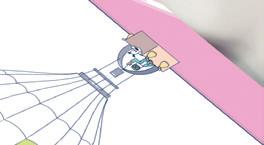
 By Sarah Davison , Industry Reporter
By Sarah Davison , Industry Reporter
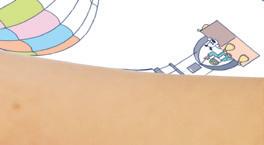




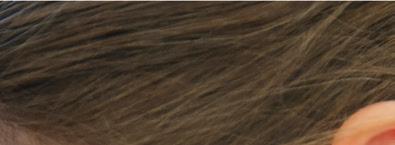
The numbers don’t lie, and they’re telling us that Australian students are falling behind in a crucial subject- maths.
Australia’s results in the most recent Program for International Student Assessment (PISA) declined more than in any other country except Finland, with the largest decline in mathematics.
Alarmingly, a 2022 report by Oxford University Press Australia (OUP) revealed that students who struggle with maths in early primary school will only fall further behind as the years go by.
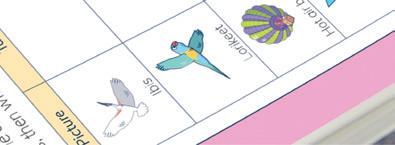
Maths skills across student cohorts usually vary between one and two years in early primary school, and span up to three years for students in Year 3. But that gap balloons by up to fi ve years by the time they are in Year 4.
The biggest shortfall identified in the study was when students reached Year 6, with onethird of the 228 teachers surveyed claiming that maths skills varied by more than fi ve years in some cases.
This means that students were at risk of commencing Year 7 with a Year 1 knowledge level and heightened anxiety around the subject.


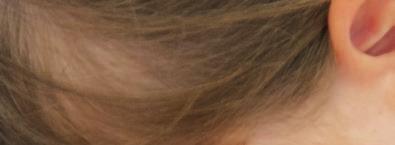

“There is an overwhelming consensus that lack of student progress in mathematics results in confidence continuing to decline, and anxiety levels continuing to increase,” the report read.

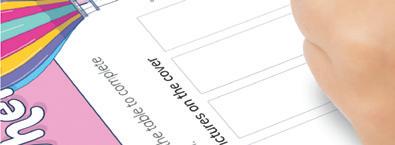


This is especially concerning given the need to ‘future





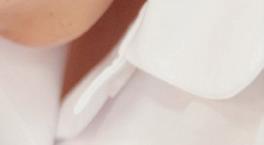


proof’ students for the workforce of tomorrow.
The Australian Academy of Technological Sciences & Engineering claims by 2024, Australia will need 100,000 more digitally skilled workers and by 2025, 40,000 more engineers will be required.

Lee Walker, Director of Publishing at Oxford University Press said that the results from the recent research are concerning.

“The research reveals that the transition from Year 6 Primary School to Year 7 Secondary School poses a big challenge for both teachers and students,” Walker said.
“Over a third (36 percent) of the primary teachers interviewed observed that many students are attempting Year 7-level mathematics with inadequate knowledge and skills, which could be having serious consequences for students’ long-term learning in Australia.




“It goes without saying that our teachers have faced a challenging two years due to COVID-19 and increasing workloads. However, the diverse range of abilities among students in today’s classrooms will only add to teachers’ already limited time constraints,” Walker said.
“It’s therefore vital that educators, school leaders, and education organisations band together to provide our teachers with the support and resources they need to meet the challenges of the classroom and the varying requirements of their students.”
So, what can be done to address this trend in the classroom? We reached out to learning providers to find out what tools are available to support maths learning.

Emma Dean, maths expert at Firefl y Education, said that student engagement can be improved by linking mathematics to real-world situations and processes. “It is important for students to see the relevance of maths in everyday life and feel connected to it,” she said.
“When selecting a maths program, it is important to consider the needs of students and teaching staff, and the availability of technology or resources at the school. A quality program should diff erentiate content for diff erent ability levels and reduce the planning and workload of teachers so more time can be spent supporting learning,” Ms Dean said.
“In terms of the program itself, it is important that it aligns with the curriculum, is engaging and current, includes opportunities to support, consolidate and extend learning, and develops problem-solving and critical thinking skills.
“Some online programs mark, record and collate results when students complete online





activities, allowing student progress to be tracked. Students receive instant verification on their performance during activities, which allows them to seek clarification if required. They can also monitor their own progress by investigating their completion of tasks and success in specific topics. Teachers can view student results instantly and see where students or classes and performing well, or where more explicit teaching and support may be required.”


Tim Tritton said the needs of your class and students should be paramount when considering maths resources. “Determine what you want your students to achieve. This will help you choose an activity that aligns with your learning goals, while keeping within the curriculum. Also consider your students’ mathematical ability and select an activity that is appropriate for their level. An activity that is too difficult or too easy can result in frustration
or boredom. Activities should also be able adaptable to meet individual needs.
“Linking maths concepts to real-life situations can help students relate. For example, if teaching percentages, teachers can use examples of calculating discounts while shopping.
“Students can work in pairs or small groups on maths projects and problem-solving activities which encourages them to share their knowledge while learning from each other. Positive recognition to all students can help them feel valued and motivated to learn more.



“Resources can be used to track student progress by analysing their results and identifying areas where they need more help. Online resources is one way to do this which can provide practical problem solving.
“Regular homework that covers the topics taught in class can help students practise and apply their knowledge. You can use these assignments to identify areas where students are struggling and provide additional support.”



Take your students on an adventure in maths with our groundbreaking new primary resource: Maths Trek.
This whole-school numeracy program for F–6 provides everything you need to target mathematical understanding, fluency, reasoning and problem-solving skills. And best of all, Maths Trek is written for the new Australian Curriculum v9!
Head to the website to learn more: www.fireflyeducation.com.au/mathstrek
World

• Students are kept fully engaged in small groups.

• Practical, back to basic’s Maths.
• Promotes positive attitudes towards mathematics.
• Most of the activities relate to real life situations.
• All abilities are catered for.
• Developed by qualified maths teachers.
• Gets students away from devices.
• Parents are welcome to attend.
For more information call our friendly staff. Ph: 1800 634 218 E: tim@worldofmaths.com.au
A museum visit can bring subjects to life for students of all ages; read along to discover how a museum visit could enrich your curriculum.
In Australia, we are fortunate to have many museums that display collections of artefacts and other objects on all manner of subjects. Whether the subject of interest is art, culture, history or science and technology, there’s bound to be a museum or exhibit dedicated to the field.
For educators, museums present a wonderful learning opportunity
as they provide students with close interactions with objects related to a given learning inquiry. Often, the physicality of an object, the interactivity of exhibits, or simply the delight of a school excursion can strongly engage students and further their understanding of a subject.
Museums are unique because they provide a type of tangible learning experience; students can see history unfolding through material artefacts, or understand complex processes such as geological formations through models and videos. The multi-sensory experience of a museum visit provides information through many pathways and inputs, leading to a more complex articulation of understanding.
In a museum, students are also given a degree of autonomy over their learning as they explore exhibits, make connections between the artefacts and their area of learning, and interact with displays. Through a museum visit, students are encouraged to take an active role in their learning as they move through the space. Museums regularly host special exhibits, introduce new displays, and include a focus on a particular subject area. Return visits to your favourite museum, then, can enhance learning across a variety of subject areas at different times.
In an article on museum settings as opportunities for sensory and aesthetic encounters in learning, David Raymond Bell of the College of Education
at the University of Otago noted that “sensory discovery in museums is fun, and may enhance learning and positive attitudes in other curriculum subjects”. Seeking museum experiences therefore not only benefits students’ understanding of specific subjects, but attitudes to learning in general.
Museums Victoria plays a critical role in futureskilling new generations and providing accessible and inspiring education programs for students across Victoria.
We offer curriculum-linked sciences and humanities programs at all of our museums: Melbourne Museum’s Learning Lab provides a first-of-its-kind digital learning space, with innovative and co-creative workshops that inspire hearts and minds to act for a thriving future.
Immigration Museum engages students in stories of migration from the 19th century to the present day through interactive sessions and exhibitions.
Scienceworks’ popular Planetarium programs are loved by learners of all ages and the new Lightning Room shows offer electrifying demonstrations investigating


different kinds of energy, including light, sound, electricity, and how they intertwine.
The Royal Exhibition Building’s new dome experience offers an exploration of Melbourne’s only World Heritage site. Schools can learn about the dynamic history of the building and see Melbourne’s skyline from the newly reopened Dome Promenade!
Bunjilaka Aboriginal Cultural Centre engages students in the complexity and diversity of Australia’s First Peoples and encourages reflection on their own cultural practices.
IMAX documentaries educate and enlighten as much as they entertain, with films that take you from the outer reaches of space to the depths of the ocean.
Museums Victoria also reaches students in every local government area through accessible online virtual learning resources and programs streamed directly into the classroom, plus our popular ‘Museum in Van’ travelling outreach incursions.
Our museum programs create memorable, hands-on learning experiences that engage students beyond the formal school setting and are underpinned by our ongoing commitment to elevating First Peoples’ knowledge. These programs support educators, parents and carers by building skills and confidence, whilst connecting students with future education and career pathways.
Museum Teachers is Museum Victoria’s free subscription service for teachers in Victorian schools and education institutions. It is designed to give educators easy access to all our museums and education services, help with planning school group excursions to our destinations, and offers educators exclusive previews of new exhibitions and professional learning opportunities.

Many museums can provide educational programmes focused on a variety of subject and learning areas, so educators can feel confident that they’ll find a programme tailored to their school or school’s needs. Government websites in most states provide a rundown of museum experiences available in that state.


Of course, it’s important that museum visits, as with any other external learning experience, are supported by structured activities before and after the experience to consolidate learning.
Many museums have digital resources to prepare students for their visit, or to synthesise the learning done post-visit.
The Old Treasury Building is a unique resource for students and teachers. A magnificent gold rush building, it reflects the growth of ‘Marvellous Melbourne’ and changing life in the city. From the basement vaults where gold was stored in the 1860s, to the elegant Executive Council Chamber, still used regularly by the Governor of Victoria, students can experience one of Australia’s most beautiful and historic buildings. Programs include the story of gold, the growth of democracy, early Melbourne, life in the city and the urban environment.
Programs offered are aligned to curricula for Levels 3 to VCE. The minimum number of students in a session is 10; the maximum is 40 (please check the website for any changes). Fees apply. Tours are allocated in one hour blocks.
In addition to the informative tours, the Old Treasury Building’s website hosts a wide variety of well researched online exhibitions. Discover ‘Women Work for Victory in WWII’, the two referendums from WWI in ‘A Nation Divided: the Great War and Conscription’ or how technology and social attitudes have shaped our working life in ‘Lost Jobs: the Changing World of Work’.
Museums Victoria empower the next generation with the
knowledge, skills and passion to lead a better future for all. Experiences are created that capture the imagination and spark a lasting love of learning. Programs are vast and broad to cater for all ages and interests, from world-class galleries, to curriculum-linked sciences and humanities programs, to the Museum in Van travelling outreach program. The organisation is proud to champion an ongoing commitment to elevating First Peoples knowledges, histories and perspective.
Museums Victoria has a vision to engage with every school child in Victoria by providing access to wondrous
discovery across its museums, programs, and destinations.
These include Melbourne Museum, Immigration Museum, Scienceworks, Royal Exhibition Building, Bunjilaka Aboriginal Cultural Centre, Museum Outreach and IMAX Melbourne.
Students can explore classroom resources and school programs from the National Museum of Australia, all linked to the Australian Curriculum and inspired by defining moments in Australian history and objects in the museum’s collection.
Australia’s Defining Moments
Digital Classroom is a treasure trove of free online learning resources aligned with the Australian Curriculum. The Digital Classroom includes comprehensive learning modules, interactives and primary sources, such as videos and images. Produced by the National Museum of Australia with the support of Gandel Foundation, the Digital Classroom aims to enliven the teaching and learning of history, geography, and civics and citizenship.
The Digital Classroom complements the Museum’s onsite, digital and outreach education programs, which orient students to explore Australia’s unique and complex history. Using inquiry learning methods, Museum education programs facilitate students’ critical awareness of Australian history by covering themes including: First Nations histories, colonisation, migration, federation, the environment and sustainability.
The Old Treasury Building is a unique resource for students and teachers. Programs aligned to the Victorian Curriculum discuss various topics including democracy, the gold rush and early Melbourne.
Our excursions, delivered by professional guides, take students from the original gold vaults, designed to hold the precious metal from the 19th century Victorian gold fields, to the Executive Council Chamber, where Victorian bills become law.




Along the way they’ll discuss how Melbourne evolved from early settlement to Marvellous Melbourne, and expose the underbelly of how colonisation impacted the local First Nations peoples.
They’ll consider everyday struggles for democratic rights, including women’s rights and the fight for First Nations recognition. Students discuss the Ballarat Reform League and influence of the Eureka Stockade on Victorian governance.
For those studying the 20th century, we examine the conscription debates of WWI, described by some historians as the most bitter, divisive and violent ever to consume the
nation. Propaganda posters available online and in the building illustrate this clearly.
Equality was tested during WWII when women entered the workforce, some for the first time, and were required to do, so called, ‘men’s work’ at a lower wage. ‘Women Work for Victory in WWII’ discusses this intriguing time and the roles women played towards the war effort and on the home front.
Temporary exhibitions help to flesh out these stories. Currently, ‘Lost Jobs: The Changing World of Work’ delves into the ways technology, economic shifts and changing social norms have impacted the workforce. ‘Protest Melbourne’ allows students to explore a social issue in a public forum.
Issues range from the change the date campaign to climate change.

In addition to the Old Treasury Building’s one-hour paid programs, extensively researched articles covering a multitude of topics are available for free online.
The minimum number of students in a session is 10, the maximum is 40. Fees apply. Please see our website for details. We hope to welcome you and your students to experience one of Australia’s most beautiful and historic buildings.
Visit

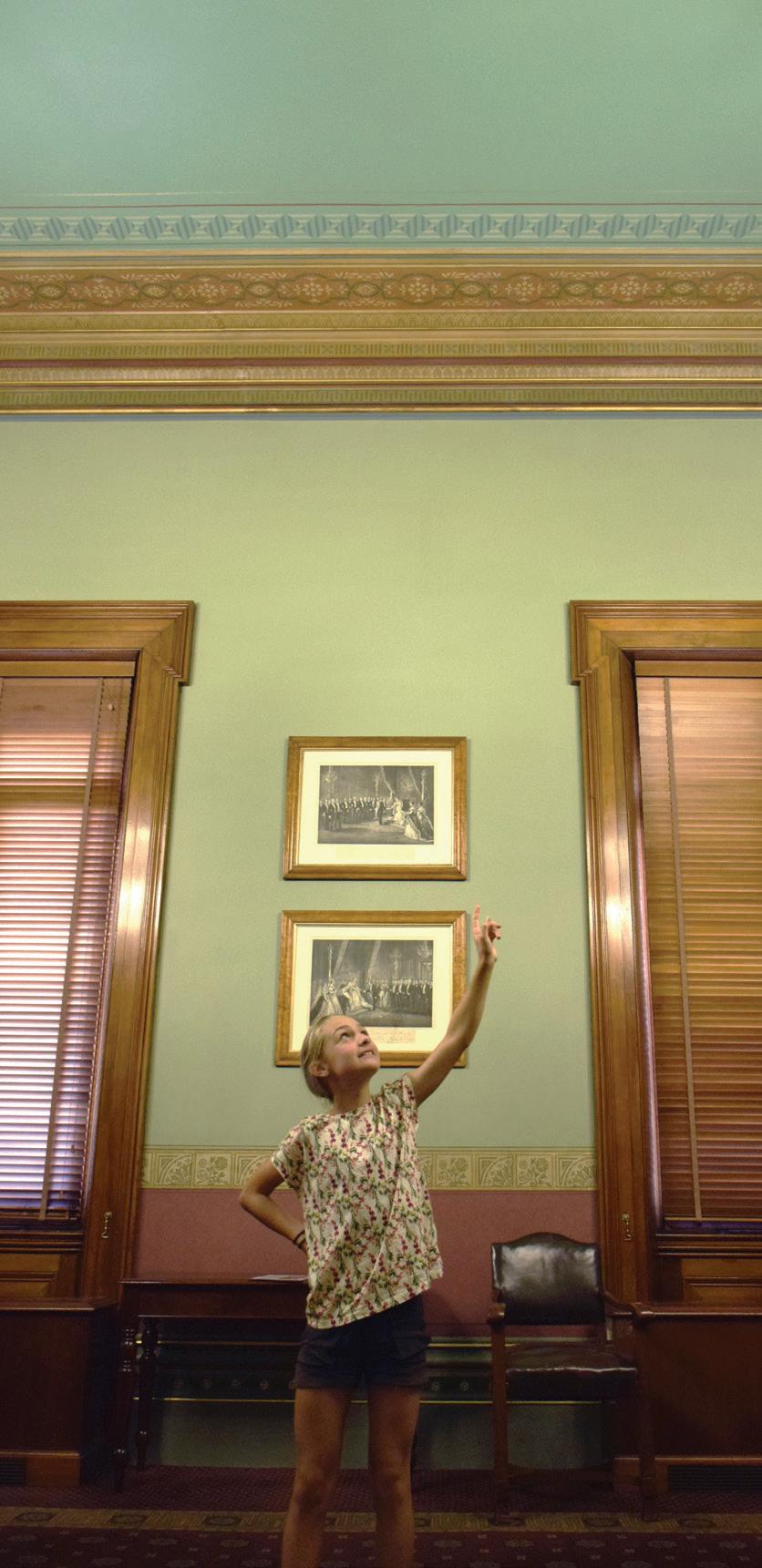


The National Museum of Australia has created the History Makers School Video Challenge to encourage students to bring history to life through film and multimedia.
The success of Australia’s Defining Moments Digital Classroom, an interactive timeline of Australian history 65,000 years in the making filled with a treasure trove of learning resources, encouraged the National Museum to further engage and inspire students at a national and local level.

In 2022, with support from the Gandel Foundation, the first History Makers School Video Challenge was launched. Combining Australian Curriculum Learning Areas, General Capabilities and Cross Curriculum Priorities, the challenge provides students with an opportunity to creatively demonstrate their research and understanding of Australian history. Importantly, it encourages students to engage with the historical events that are of most interest or relevance to them.
“This was an excellent opportunity to use technology in the classroom authentically. It wasn’t something extra on top … but was able to be embedded in the learning we were already doing, which was fantastic. The students … keep asking if we’re going to do the challenge again! I’m so excited that we participated because it provided student-driven, authentic learning.” – Participating Teacher 2022
The videos submitted in 2022 came from across Australia and covered a broad range of topics including the demise of Bushranger Johnny Gilbert, the abolition of capital punishment and the integration of schools. One class of students went back to the 1700s. Ten major prizes of $2,000 were awarded across the competition and winners were invited to an award ceremony at the National Museum of Australia in Canberra.


The 2023 History Makers School Video Challenge has just been launched and entries are open until 15 September 2023. The challenge is open to all Australian school students (K-12) and can be completed as individuals, small groups or whole classes. The teaching and learning experience can be adjusted for all year levels, for all levels of digital capability and across a wide variety of topics. There is plenty to stimulate and excite students, who can choose their own defining moments in history.
The 2023 History Makers School Video Challenge is supported with video resources for teachers on cultural protocols, copyright acknowledgements and topics to be explored. All winning videos become part of the Digital Classroom to be used by other students as resources.
Are your students ready to take the challenge and be a #HistoryMaker in 2023?
For full details and terms and conditions of the competition visit: Nma.gov.au/history-makers.
Students from Galilee Catholic Primary School, Bondi, receive their History Makers 2022 prize from Steven Gandel and National Museum director, Dr Mathew Trinca. Photo: National Museum of Australia Students from Binalong Primary School, New South Wales, receive their History Makers 2022 prize from Steven Gandel and National Museum Director, Dr Mathew Trinca. Photo: National Museum of Australia.

All children love a chance to get out of the classroom – but can external learning have wellbeing benefits, too?
Many of us will remember the excitement of a school excursion from our own school days. Whether it was a sports trip, or a visit to the local museum or park, there was something about gett ing out of the classroom that always put the spark back into learning for a classroom of kids. Maybe it was the fresh air, or
the novel experiences that accompanied field trips: the smell of cut grass, a sharp breeze or the excitement of the unknown that always prompted a fresh enthusiasm for learning.
Once back in the classroom, books didn’t seem as dreary, and tasks not as arduous as before. There’s no doubt that field trips are a refresh, a brain break that can help some students with
their intrinsic motivation for schoolwork. Anecdotally, many kids and teachers will extoll the benefi ts of an excursion for increased focus and improved att itude among learners. But can external learning have tangible wellbeing benefi ts?
A few small studies have shown a correlation between external learning and improved mental health and wellbeing in children. One study, involving 511 Danish students aged 9 to 13, showed that psychological wellbeing was improved in students who were regularly exposed to learning beyond the classroom as compared to those who had much less frequent contact with external learning.

When learning about history in the classroom, students can find it difficult to visualise what life was like in the past. They often feel history is too far removed from their daily lives to be relevant and, as many teachers know, explaining the enduring impact of history on today’s society is challenging.
By visiting historic destinations, such as Cockatoo Island / Wareamah on Sydney Harbour, teachers help their students to meaningfully engage with

history and complement what they have learned at school. There are 4 key benefits of visiting historic sites:
1. Students establish a tangible connection to the past.
2. Students become active participants in their own learning by asking questions, making connections and undertaking historical enquiry.
3. Students develop an appreciation of the legacy and continued relevance of past events.
4. The study of history is enriched as students engage directly with spaces and stories that shaped history. We invite you to book one of Cockatoo Island’s stage-specific education programs. The island features a UNESCO World Heritage Listed Convict Site as well as a historic shipyard, meaning students have a unique opportunity to engage with –and deepen their understanding of – Australia’s layered history. PLUS: You can extend your excursion with a stay in
Cockatoo Island’s campground. Choose from 3 camping options, catering for di erent needs and preferences.
Scan the QR code to learn more and make a booking.
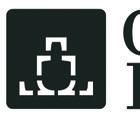
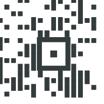



cockatooisland.gov.au

Here, external learning was defined as any out-of-classroom activity, which could also mean learning which incorporated the external environment. This meant art-classes in the field, statistics involving use of school grounds, and so on. The study ran for a year, and compared classes which were frequently exposed to external learning with classes which were exposed to external learning less frequently, around two hours a week.



Wellbeing was self-evaluated via questionnaire, so results are to be taken with this caveat, but the benefi ts of external learning were shown to be the greatest in pupils of low socio-economic status, and those with hyperactivityinattention conditions.

Results were most pronounced when pupils were exposed in fewer, but longer sessions outside the classroom. These results may indicate that an increased frequency of external learning can create more equitable learning conditions in the classroom.
Regular external learning was found to increase prosocial behaviour for all students.1
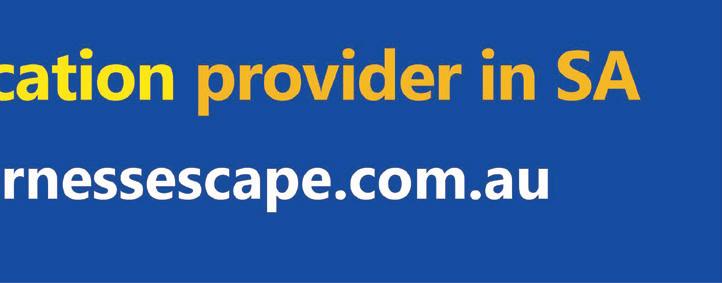
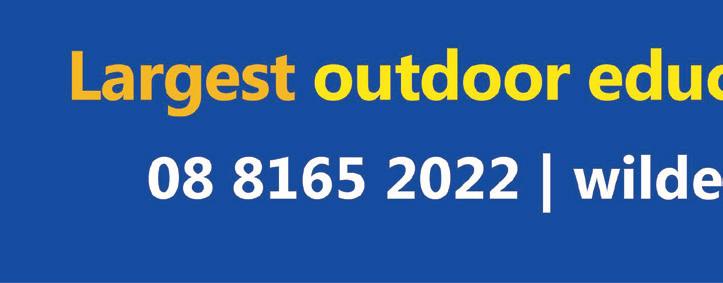
Another study, also done in Denmark, showed external learning was associated with improvements in physical activity for boys, though not for girls. The study measured PA
by using accelerometers, which were att ached to children for a week. This allowed researchers to compare physical activity between external learning days and non-external learning days. The study found that days with learning outside the classroom increased physical activity in boys, and on those days, more





physical activity was recorded during external learning time than in classroom time.2
Another study, conducted more recently in 2021, found that there were no gender diff erences in increased physical activity associated with external learning.








It also posited that learning outside the classroom may promote physical activity due to the nature of learning opportunities when outside, or in “greenspace”. The study reads:


“Often, EOtC includes learning activities that demand pupils to move, e.g., measuring and estimating the volume of trees in maths class or incorporating tag-and-relay races in language lessons.” 3
In current Western classroom models, children may spend much of the day sitt ing. Physical activity is treated as an “extra”,
meant for cocurricular activity or infrequent PE sessions. In some schools, increasing physical activity during the day is imperative as children

may face barriers to physical activity outside of class. These may include cost barriers to gett ing involved in cocurricular sport and time-poverty, among
others. This means that some of our vulnerable students cannot access the myriad benefi ts of physical activity, such as improved cognition, academic achievement and overall wellbeing. Therefore, external learning as a method of promoting physical activity may create a more equitable learning environment in some cases. These studies indicate that increasing physical activity may be one of the mechanisms by which external learning improves student wellbeing.
Educators looking to cheer up their pupils should consider adding some external learning© Adobe Stock, stock.adobe.com
Another possible mechanism of outside learning improving student wellbeing is simply being outside.
Exposure to natural environments has been associated with lowered stress and can help with symptoms of depression and anxiety.
Those with attention-deficit disorders can also improve their symptoms by spending time outdoors. Although what counts as a “restorative” environment is contested, most research

agrees that being in nature has some wellbeing benefi ts.4

In conclusion, it seems that the excitement that comes from that special excursion feeling at school is backed up by real benefi ts to mental and physical health. No matter what the occasion, whether it’s a short trip to the school field, a longer sports excursion to the local park or beach, or even an overnight camp or flight, students stand to reap long-term benefi ts from added


Gould League has been at the forefront of Environmental Education in Victorian schools for over 100 years. Since 1909 Gould League have lobbied for and achieved policy and protection of biodiversity, developed environmental programs and resources for schools and teachers nationally and delivered thousands of incursions and excursions for students
K – Level 12 covering a wide range of subjects from drama, STEM, Economics, Geography and Biology through to Waste Management and Biodiversity.
They currently deliver 35 incursion and excursion programs across greater Melbourne with 3 unique sites –The Cheltenham Sustainability Education Centre, Ricketts Point Marine Sanctuary at Beaumaris and the Toolangi State Forest.

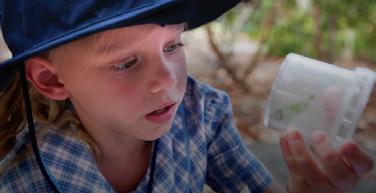

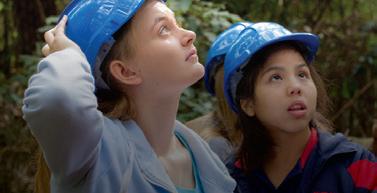
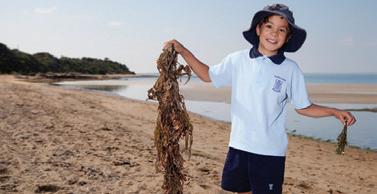

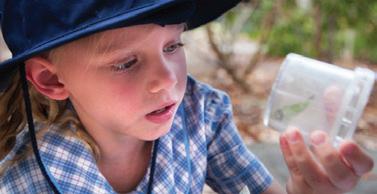
This year they have partnered up with Maddocks Foundation to ease ‘cost of living pressures’ for disadvantaged families and communities.
Schools simply need to email gould@gould.org.au and let them know in less than 500 words, why you deserve a subsidy and they’ll give away a total of $10,200 to make a unique learning opportunity a ordable to those less fortunate.
Bookings however must be undertaken by June 30, 2023.
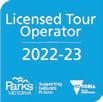
external learning time. So, for educators looking to cheer up their pupils, or inject fresh excitement into the school day, consider adding some external learning to the curriculum.
References
1 Bølling, Mads, Janni Niclasen, Peter Bentsen, Glen Nielsen. (2019) “Association of Education Outside the Classroom and Pupils’ Psychosocial Well-being: Results from a school year implementation.” Journal of School Health 89(3): 210 –218. h ps://doi.org/10.1111/josh.12730


2 Schneller, Mikkel Bo. (2017). “E ects of education outside
the classroom on objectively measured physical activity: results from the TEACHOUT study”. University of Southern Denmark.
3 Bølling, Mads, Erik Mygind, Lærke Mygind, Peter Bentsen and Peter Elsborg. (2021). “The Association between Education Outside the Classroom and Physical Activity: Di erences A ributable to the Type of Space?” Children (8) 486. h ps:// doi.org/10.3390/children8060486

4 Pearson, David G. and Tony Craig. (2014). “The great outdoors? Exploring the mental health benefits of natural environments.” Frontiers in Psychology 5(2014). h ps://doi. org/10.3389/fpsyg2014.01178
2 and 4 hour programs for Prep to L Level 6
Our one-of-a-kind Sustainab lity Education Centre w th ts popu ar themed rooms and disp ays provides a hands-on learning env ronment for invest gating natural resources b odiversity climate change waste and more Meet our worms stick nsects and izards!


From $360
4 hour programs for Levels 4 to 12
Too ang State Forest (home of the eadbeater possum) n V ctor r a s ta l forest reg on offers an mmersive experience in a Temperate Ra nforest Mounta n Ash Forest and logging c coupe to explore ntr cate ecosystem serv ces a ong with the impact of humans fire and c imate change and undertake essentia fie d work
From $540
2 and 4 hour programs for Prep to Level 12
Ricketts Point Mar ne Sanctuary offers accessib e rockpools sandy b beaches with seawweed un que coastal vegetat on wi d ntertida marine l fe a Mar ne Education Centre and evidence of human impacts Undertake essent a F eld Work or simply give students an outdoor learning exper ence that they w l never forget!
From $440
1 5 hour programs for Prep to Level 6
We bring the earn ng resources and educators to your schoo ! Whether nvest gat ng iving things or discovering earth s natural resources and recyc ing our h gh y experienced team of educators have the flex b l ty to tai or programs to meet your student needs
From $360 plus travel
of Living pressures and 3 unique locations are just some of the reasons generations of students and teachers
 By Gemma Easton , Editor
By Gemma Easton , Editor
From hockey to netball, tennis and athletics, the opportunity for young people to become involved in sport are wide ranging. Sport can give students a break from study, helping them to relax and unwind.
Government health website, healthdircect.gov.au points to several benefi ts of exercise. Exercise facilitates the release of chemicals like endorphins and serotonin in the brain, which improves a person’s
mood. Regular exercise can also help to reduce stress, and promote better sleep, which are both important for developing minds and bodies.
Participation in school sport can help build friendships and foster a sense of belonging within the team, and the school community. Connectedness
and sharing experiences is important for young people, and helps to combat feelings of loneliness and isolation. Through sport, students may interact with people outside their usual social circle, helping to broaden their friendship group and expose them to new people, ideas and interests.
As well as boosting their physical fi tness and wellbeing, participation in extra curricular activities, like sport, helps students develop a range of skills. Time management, teamwork, personal responsibility, as well as a sense of belonging and shared identity within the team and the school can be fostered. School sport can also help to develop a love of sport and exercise more broadly, sett ing students up for a lifetime of healthy habits.
To help keep students excited about school sport, it is important to have the right equipment and playing surfaces. Students who practise and train on the same type of surface on which they will compete may perform better. A familiarity with how the surface will behave will provide a competitive advantage.
The benefits of exercise as part of a healthy lifestyle are well documented.
School sport is a great way for students to stay active, make friends and have fun.Image courtesy of SportEng
Design options are available to add some fun to your playing surfaces.
Providing the right playing surface may also minimise injuries, as surfaces are tailored specifically to the activity they are being used for. This is particularly important for young, developing bodies.
Installing and maintaining suitable playing surfaces can also demonstrate to students the school’s commitment to school sport, and the pride the school places in its sporting teams. Providing an elite level surface raises the esteem of the sport, and may encourage greater student participation. Suitable playing surfaces may also make your school an attractive venue for hosting inter-school competitions. This will again raise the profile of the school and its sporting teams, and may help generate extra revenue for the school through court hire.
Design options are available to add some fun to your playing surfaces. Consider making a focal point of your surface, giving your school community something interesting to look at even when a game is not being played!
Is it time to install or upgrade playing surfaces at your school? We asked the experts for their advice.
Grassports Australia Sales Manager, Ash Whitfield, highlighted several considerations when upgrading a sports surface. “Consider the longevity of the product you are putting in, and the use of Australian made products which are built for our harsh climate. Think about asking outside user groups to pay for ongoing maintenance costs of the facility, and funding
future upgrades,” Mr Whitfield said. “Schools should also plan what the area will be used for as there are different pile heights and regulations for each surface and sport.
“We hear often from schools that where we have upgraded the old, warn bitumen to a brand-new sports surface, staff and student participation has increased dramatically. Children are drawn to the to the area with its bright and colourful lines and are more energetic and active during play times.

“Maintaining your surface frequently is vital to ensure optimal playing characteristics are preserved and the longevity of the surface is assured.
Towards the end of the surface life span it is wise to start planning for an upgrade.
“No two sports facilities are the same, so a tailored maintenance plan helps ensure a safe facility, always in optimal condition. It is important to maintain and monitor the surface quality with full reports detailing the


facility condition and works that have been carried out.”
SportEng CEO Jarrod Hill said durability of the playing surface and longevity of the underlying pavement or profile should always be considered when upgrading a sports surface. “The correct surface selection is important to ensure it is fitfor-use. This will often dictate the type of pavement or profile it is installed on. The underlying pavement/profile needs to address any constraints that the site might have, for example, non-favourable ground conditions, and have a strong relationship with the playing surface and associated drainage infrastructure to ensure it has a minimum design life of 20 years.
“Typically, schools choose either synthetic grass or acrylic for use on multi-use Fields of Play. Both are durable and require low maintenance compared to natural turf. Synthetic grass surfaces can replicate the playing conditions of natural turf. These
systems typically adhere to the performance requirements of a sport governing body such as the AFL, FIFA, etc.
“An acrylic surface is the most durable surface that can be considered for a school multi-use area. It requires the least amount of maintenance compared to other surfaces, and can be readily rejuvenated by recoating with acrylic.”
Mr Hill said regular visual inspection of the surface to identify potential issues is important, helping to fix small issues before they become larger ones. “Ultimately the surface performance will be heavily reliant on the product itself, the initial construction, the level of use and maintenance and the condition of the underlying pavement/profile. Getting it right the first time is paramount. Failure to address these areas at the time may lead to ongoing issues with the surface.”
Does your school have a safe, multi-purpose indoor gym to accommodate for all conditions?

To have an indoor facility that can cater to Australia’s unpredictable weather is invaluable. It gives the opportunity for students and communities an indoor option to continue as planned.
APT’s Laykold GymSports is a proven high-performance, seamless, multi-layered polyurethane (PU) system with superior point elastic cushioning. It is made from 66.85% recycled / renewable materials and meets all Australian environmental standards. It is a cost-effective system that is suitable
for school gymnasiums right though to Olympic venues. Plus, it is the only PU flooring system made in Australia at APT’s ISO-certified facility in Melbourne, which means fewer delays, greater transparency and competitive pricing for customers.



APT are committed to the continued development
As part of APT’s commitment to revolutionising sports surfaces to reduce injuries and improve player comfort, Laykold GymSports delivers greater force reduction than timber or vinyl floors. Sprung timber flooring generally provides up to 30% shock absorption per 80kg of body weight. Laykold GymSports offers up to 30% shock absorption per every 35kg or more of body weight.
Laykold GymSports provides a lifetime of quality:
• Manufactured to ISO certified quality
• 10-year warranty
• Seamless look and feel, so no trip hazards
• Sound dampening cuts back on noise pollution
• Longer life span means better value for money
• Low maintenance and easy repairs
• No need to remove the old surface
• Most installations completed in one week, so less downtime
Melbourne-based APT installation partner, Pro Court Surfacing and Construction, was engaged by OneSchool in Officer to create a weatherproof, indoor court to cater for all the different sports and activities that need to continue rain, hail or shine. Pro Court Surfacing and Construction seamlessly applied the Laykold GymSports system over the course of a week, which included line markings for basketball, netball and volleyball, to create a sophisticated multipurpose indoor facility for the school and wider community.

Experienced Queensland-based APT Agent partner, Grassports QLD was handed the task of designing and constructing a multiuse facility to form part of the student activity centre at the Helensvale State High School. The job at hand also included 4 outdoor Laykold basketball courts, however the management team knew that the indoor facility, using Laykold GymSports flooring would be an invaluable addition. Having the all-weather option means training and activities can always continue as planned.

Laykold GymSports (formerly Dynapoint) was also installed at Ikon Park, the home of the Carlton Football Club. This project involved the construction of a new two-level “state of the art” training facility, which included a gym, warm-up area, ‘altitude’ room, aquatic centre, function space, cafe, sports consulting suites and administration space. As the elite players of the men’s and women’s game need to train throughout the year, it was important that the club had an all-weather surface with the added benefit of force reduction properties.



















































































































Strong from our extensive experience in designing sports facilities within schools and dealing with the complexities of Design and Construction tenders, SPORTENG was engaged by Landscape Options to design a multi-use oval for Cranbrook College.
The natural turf oval caters to rugby, football, cricket, and

athletics practise and competition. The project involved many different parties, including the main builder (Richard Crookes Construction), Client Representative (ARUP), and the client (Cranbrook College).
Led by SPORTENG’s Senior Civil Engineer Cameron Nayar, the oval at Cranbrook College presented a challenge as the project had already begun when SPORTENG was engaged to produce design drawings within a tight timeframe.
“We had to produce a set of construction drawings in the space of about a month to allow them to continue construction
without any delays, to reach the window for the grass growing season,” said Mr Nayar.
Another challenge was that construction had already started on the other parts of the sporting facility, which meant that the field of play had to be designed within a fixed perimeter.
“Whatever we did, we couldn’t change the levels too much, and we had to try and make it work within the Field of Play area. It was a difficult task, as there were a lot of different parties involved in the project, and we constantly had to come up with solutions that would work in the already existing fixed perimeter,” added Mr Nayar.
The third challenge was designing a solution for the oval profile, as half of it would sit over the school’s underground swimming pool, the other half on natural ground.
“It would be poor design to have water sitting directly on the concrete slab for long periods. If it did, it would create an extra surcharge on the slab, putting more weight and pressure on it. The best option here is to get the water away from the slab as quickly as possible, there is also the issue of two different subgrades which can lead to differential settlement. This needed to be accounted for in the profile design”, explained Mr Nayar.
With such a long train of command and a short timeframe, SPORTENG had to come up with smart solutions to be able to deliver the design on time.
Mr Nayar started with on-site visits to understand the subgrade requirements. “The first thing I did was to check if any testing has been done on the existing ground,” said Mr Nayar. “I went on-site and investigated this side of the natural turf and dug some holes to check the profile.”
He discovered that it was a sandy profile, therefore no subgrade improvements were necessary, and that we could safely lay gravel sand on sand without too much risk of settlement. Tests were also conducted on imported fill on-site to ensure it didn’t contaminate the sandy subgrade.
The next challenge was creating a homogeneous profile that could drain quickly over the two diff erent subgrades. Mr Nayar solved this by using a perched water table profile which consisted of a homogeneous layer of gravel
and sand, with the addition of a drainage cell on top of the concrete slab to allow the runoff to drain quicker. The level diff erences were corrected with diff erent thicknesses of drainage gravel and a constant depth sand layer was
installed. Also, a diff erent process solution was needed for this project. “Rather than delivering a fully comprehensive design in one package, we adopted a staged method, where we worked the contractor enough lead time
to order materials and bring it to the site, before moving on to the next stage,” Mr Nayar said.
SPORTENG delivered the requested design on time, while staying within the budget designated by our client Landscape Options.
The school is now using the oval for school practise and competition. The school also plans to open the sporting complex to the broader community through various activities.



When asked about the new sporting facility, School Council President Jon North said: “[Students] find it really inspirational. The school’s environment is important for learning and designed in line with Cranbrook’s educational philosophy, which is about inquiry and experience, and being creative. A lot of the facilities were built 50 years ago, and they were built for a smaller school and fundamentally we needed more teaching and learning spaces.”
E L E V A T E
Y O U R G A M E
SPORTENG had to come up with smart solutions to be able to deliver the design on time.
Getting involved in a sports team at school is an enriching experience for a developing child or teen. Not only does it teach good fitness habits and teamwork – skills which a child or teen will likely take into their young adulthood and beyond –being in a sports team can also help build a sense of community and identity. Additionally, sports are fun, and can get students engaged in school. For some, school sports teams may even be the start of a more illustrious sporting career. But even though most students won’t be the next Ash Barty or Jonathon Thurston, participating in school sports still provides a myriad of benefits.
Anecdotally, school sports are said to be good for young people, building discipline, teamwork and social skills. A student’s soft skills are developed through participation in extra-curricular school sport, including time management, confidence and organisation. These are valuable skills which will benefit students throughout their educational journey, and beyond.

In recent years, student wellbeing has been prioritised. Evidence suggests that organised sport correlates strongly with improved wellbeing, with organised sport having unique characteristics that promote wellbeing.
One hypothesis is that sports enmesh students in their community, creating a strong sense of “relatedness”. Another suggestion is that sports promote a healthier relationship to physical activity – one that goes beyond the sport itself.
Sport may also improve children’s self-esteem, as children have fun during sport. This improved self-esteem and enjoyment from participating in sports may increase motivation for participation in the game.
Certain small-scale studies have even shown a positive
relationship between sports participation and cognition.
External sports programme providers could add value to the curriculum. As they are experts in their field, classroom teachers often feel more comfortable allowing external providers lead the curriculum in this area. External providers in sport and PE can also provide a PLD opportunity for teachers.
For some students, opportunities to participate in sport may be limited. Barriers may include financial and time factors. As external school sport providers often bring their own equipment, and sessions occur during the school day, some of these barriers can be removed by using external providers, allowing some less advantaged students to access the benefits of organised sport.
As for external providers, many regions have locally operated initiatives which may offer tailored programmes to suit your school’s needs. Different sports associations may also provide specialised sports programmes, and have educators trained to teach the specifics of their sport to young people. For specific sports, external providers may also be able to provide best practice guidelines, such as proper form and technique. This ensures a safe and effective sporting environment for all participants.
In terms of sports equipment, a wide variety is available depending on your school’s needs. For primary schools or recreational use, basic and affordable equipment is available from a variety of department stores. These might suffice for school excursions to the beach, where schools might participate in some light intraschool volleyball or cricket. For more formal sporting occasions, however, affordable sporting equipment is also available from wholesale suppliers. These range from athletics equipment such as rubber discuses, to a wide array of balls, cricket bats, badminton rackets and shuttles. Many schools may also choose to invest in durable sets of sporting equipment to be shared between classes. This ensures that a wide variety of sports are accessible to all students.
Sports participation can provide many opportunities for students, which may increase engagement and school spirit. For example, sporting excursions can be an exciting opportunity for both physical activity and a break from academics. These excursions may be to local sporting facilities, or even the local park or beach. As well as getting the kids outside, these excursions may also serve to help students feel a part of their local community by familiarising them with community facilities.
Finally, schools may choose to recognise sporting participation or achievement with certificates and awards ceremonies. With a little effort and some graphic design skills, certificates can be an excellent way to build school spirit, as well as an enthusiasm and motivation for sports. A little recognition could go a long way to building a long-standing love for sport and recreation, ensuring healthy and active young people develop into healthy and active adults.
School sports are a quintessential part of every student’s school experience.Image courtesy of Golf Australia
Badminton is a sport for anyone, anywhere, anytime. It’s low-impact and high-intensity which makes it the perfect activity for children to develop physical literacy skills.

As one of the most popular sports in the world with more than 300 million active players worldwide and growing Australian participation, badminton’s history is rich. First played in Australia as early as 1874, with the first competitive clubs established in the 1900s, the Australian Badminton Association was formed in 1935, one year after the formation of the International Badminton Federation.
Badminton involves running, lunging, diving and hitting, and after just 20 minutes on court players can make up to 350 changes in direction of 90 degrees or more, building speed, strength, agility and flexibility.
Badminton is the fastest racquet sport in the world with recorded speeds as high as 300 – 400 km/h


Badminton can be played at any pace which makes it an activity for all abilities. Especially

during the development of physical, mental and social skills in childhood.
Badminton Australia programs are aligned to the Australian National Physical Literacy Curriculum and as a result has great benefits which includes improvement in physical health, numeracy skills, mental resilience, strength, handeye coordination, social skills, critical thinking, emotional awareness, language development, collaboration and teamwork.
In 2022 Badminton Australia launched a new introductory program called Shuttle Smash, an entry level program for 5 to 12 year olds delivered outside of school hours by clubs, community venues and cultural organisations. The development of the initiative was made possible by a range of partners, including the Australian Sports Commission, Badminton World Federation (BWF), Badminton Oceania, Women Sport Australia, Disability Sports Australia, Sport Inclusion Australia, Deaf Sports Australia, National Indigenous Sports Foundation, with all states and territories assisting with the launch of pilot programs.



Shuttle Smash complements the program, Shuttle Time, that was launched by the Badminton World Federation (BWF) in 2012 and has grown to be a popular offering through Sporting Schools. As an Australian Government initiative, Sporting Schools funding provides teachers with access to lesson resources, training and equipment to facilitate badminton in school settings.
For more information visit badminton.org.au, call 03 8319 5717 or email participation@ badminton.org.au

www.shuttlesmash.org.au


Nathan and Gronya represent Australia as part of the National Falcons Team and are both Commonwealth Games athletes

www.sportaus.gov.au/schools


























For educators, the significance of creating a supportive and comfortable learning environment cannot be overstated, yet a crucial but often overlooked aspect of the educational process is the air quality and air conditioning in classrooms.
School News delves into the importance of addressing air quality concerns in schools, the benefits of adequate air conditioning, and the steps that schools can take to improve both.

Recent studies in both Victoria and NSW, conducted by RMIT and UNSW respectively, have shown that air quality in primary and
























secondary school classrooms is poor, with the amount of CO2 often far exceeding the maximum acceptable standard. A large amount of research has documented an association between poor air quality and student performance.
One study involving 100 schools in the United States titled “Association between substandard classroom ventilation rates and

































students’ academic achievement” demonstrated that classroom ventilation rates are directly associated with students’ academic achievements and measurable progress in maths and reading was observed through standardised tests when air quality improved. These conclusions were echoed in another big cohort study performed on more than 8000 children in the UK.
Shockingly, research going back to the 1970s has shown temperatures above 23°C can negatively impact student comfort and concentration, particularly in subjects like reading and mathematics.

A 2018 Harvard Kennedy School study of 10 million secondary school students found that they had better academic results after a cool school year than after a hot school year. In fact, student achievement dropped by one percent per additional degree in temperature.
Extreme temperatures can affect students’ concentration and cognitive function, and overall learning outcomes can be impacted. Students can focus better, retain information more effectively, and perform at their best academically when temperatures are comfortable.

Good temperature control and regulation also helps to improve the overall health and well-being of students and staff, when comfortable temperatures are maintained, schools can even reduce absenteeism due to illness.
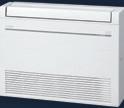

Maintaining an optimal temperature in learning spaces can positively influence student performance and as Australian temperatures fluctuate and continue to rise, the need for air conditioning in classrooms becomes more critical.
In addition to regulating temperature, air conditioning systems can also improve air quality by filtering out allergens, pollutants, and airborne particles. This creates a healthier and more comfortable environment for both students and teachers, reducing absenteeism and improving overall academic performance.






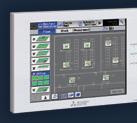




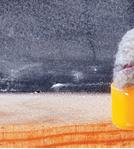
When schools implement efficient heating and cooling systems, they can also make significant energy savings and cost reductions.
Energy-efficient HVAC systems, such as those with programmable thermostats, zoned controls, and smart sensors, can regulate temperatures more effectively, avoiding unnecessary energy consumption. Importantly by optimizing energy usage, schools can reduce their utility bills and allocate those savings to other educational resources.

Here are some points to consider for schools to ensure classrooms are conducive to learning by providing adequate air conditioning:
• Regular maintenance, servicing, cleaning, and filter replacements help maintain air quality and ensure the system runs efficiently, reducing energy consumption and costs.

• Invest in a system with HighEfficiency Particulate Air (HEPA) filters, to effectively remove pollutants and allergens from the air and improve indoor air quality.
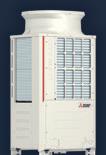


• Increase natural ventilation, whenever possible encourage natural ventilation by opening windows and doors to allow fresh air to circulate.
• Adopt green building practices because sustainable design principles can promote better air quality.
• Educate staff and students about the importance of air quality and managing air conditioning to encourage responsible practices, such as promptly reporting maintenance issues and turning off air conditioning systems when not in use.
• Maintain appropriate humidity levels and prevent stagnant air.

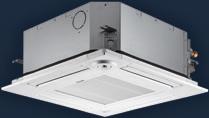


• Collaborate with air quality and air conditioning specialists to help identify potential problems and develop tailored solutions for specific needs.
In Term 2, make air quality and air conditioning a priority in your classroom. Take the necessary steps to nurture a healthier and more favourable learning environment for your students and teachers and pave the way for enhanced academic performance, improved overall health for all, while reducing energy costs.
Extreme temperatures can affect student’s concentration
Australia generates around 76 million tonnes of waste each year. Globally, enough waste is generated each day to fill around 14 large stadiums.
Environmental awareness has increased in recent years, particularly in young people. Climate change, the pollution of our waterways and the impacts of fast fashion have been brought into focus. Young people want to take action to protect the environment. Effective waste management, the correct disposal of rubbish and reducing and reusing products all help to alleviate the amount of waste sent to landfill. Schools can help provide students the tools and knowledge to achieve this.
A waste audit is a great way to find out how much waste your school produces, and what type of waste is produced. This can be done in house by staff and students, or conducted by an external organisation.
Beyond improving waste management in your school, findings from a waste audit can be linked to many areas of the curriculum. Geography students could investigate the challenges of planning and managing Australia’s urban future, or the different environmental worldviews of countries, and their ability to manage waste. Data from a waste audit can be used comprehensively by maths classes. Solutions to school, community and global waste and environmental problems can be explored by Science students.
Separating rubbish is a simple first step for schools to help reduce the amount of waste being sent to landfill. Ensure the correct bins are available for the disposal of waste, recyclables, organic matter like
food scraps, and 10c containers. Bins should be well labelled and easily identifiable to prevent contamination. To encourage students to use the right bin, add a competitive element. A prize could be awarded to the class, year level or house group that fills their recycling bin first, collects the most 10c containers or has the least amount of waste in their general waste bin. Organic waste, including food scraps and garden matter, accounts for 20 percent of Australia’s waste. Composting is an easy and effective way to divert this waste from landfill. Many companies offer purpose built composting bins, some with the ability to create a worm farm. Students can be charged with the maintenance of worm farms, helping them to develop
responsibility and accountability. Compost can be used on school gardens, and to grow fruit and vegetables at school. This reinforces the sustainability message, teaching students the value of growing your own food and the associated environmental benefits.


Opportunities to teach the three Rs – reduce, reuse, recycle – can extend beyond the school grounds. A visit to a local recycling plant or waste processing plant will give students firsthand knowledge of what happens to their waste. A waste audit or clean up activity at a local park or community space can bring awareness around the importance of correctly disposing of rubbish so it does not contaminate natural spaces. As a learning
activity, this could extend to an exploration of found rubbish items on local flora and fauna.
School News asked an industry expert for their ideas.
Lindsay Stead from Astra Street Furniture said there are many fun ways to get students excited about reducing, reusing and recycling. “Students can make art pieces or sculptures from recycled materials that can be displayed in the school yard. This can help raise awareness about the importance of recycling, and encourage imagination and creativity. A student led waste audit can help students see firsthand how much waste is being produced, and how much of it could be recycled.
“Effective bin design can help facilitate education. Include bold, easily recognised Australian Standard waste stream colours (for example, yellow for recycling), and appropriate graphics. Get students involved in the design process!
“Asking students to bring fresh food and re-usable containers makes a huge impact on waste. 10c container recycling is a big hit in many schools, especially when it is run by the students and the income generated is published along with what the money will be used for.
“Waste contracts are costly so the choice of bins needs to start with an assessment of what waste streams are currently being managed and what you can budget for. With multiple waste streams it is best to install modular bins that are designed to nest together in banks of two or more, as these can be easily added to within budget as needs change.”

individual school environment.

Using a ‘design and build’ holistic approach, Timber Creations make playgrounds to suit the space available, utilising the landscape and existing natural features.

The timber play elements will entice children to explore and investigate through natural colours, shapes and textures.
Timber Creations’ mission is to design amazing playspaces that will not detract from the natural features of the environment, but enhance them, bringing together a sense of wonder and play.

The team’s unique expertise with native Australian timbers means that the beauty and individuality of the Australian trees can be harnessed in



each playground piece.
Due to Australia’s tough climate, local trees grow in fascinating ways, and there is no timber like ours in the world! Timber Creations collect the most interesting pieces and create playspaces with a unique sense of joy.
All the play pieces that are made by Timber Creations Nature Play are custom

handmade on the Central Coast NSW. Have all the hassle taken out, and all the excitement put back into play, and contact Timber Creations for an iconic playground built to your budget, your environment, and your special interests!














































Introducing the Star Structure - the perfect solution for schools looking to provide maximum shade with minimal disruption. Built on a single post, they are great for open areas needing shelter or outdoor learning areas. With size and colour options, the Star Structure can blend seamlessly into any existing facilities or stand out as a bold statement piece. Why not create your own constellation? The reinforced corners and seams ensure maximum lifespan, while the well-tensioned fabric and fully welded attachment points ensure durability. Whether creating shade or an all-weather space, the Star Structure is an excellent investment for any school looking to improve their outdoor facilities.

C Greenline P 1800 044 200 W greenline.com.au






All New Stowmate BagTrac Wall Mount Rails, designed specifically for use with your Safehook Ihook products. Stowmate offers EndUsers and Specifiers a smarter, safer way to wall mount bag and hat hooks. Interlocking aluminum rail extrusions securely fixed to a wall offer a low maintenance, heavy duty alternative to traditional wooden rails. Easy to install, Non-Combustible Options, Free Standing or Wall Mounted. Hidden wall fixings, Modern design, wont rust, or fade, Lightweight Anodized Aluminum construction won’t require painting, won’t rot, naturally bug resistant, perfect for use indoors or outdoors. Manufactured and designed in Australia.

C Safehook P 07 3511 1668 W safehook.com.au
The Spencer Picnic Settings from Area Safe Products are a hugely popular choice for schools. The 4-Sided (seats 8) or 6-Sided (seats 12) settings are a great way to facilitate outdoor learning and collaboration between students and teachers. Available in a standard light grey or a choice of 4 bright colours (green, red, yellow, or blue) these are the perfect setting for any education environment! The complete unit is constructed from heavy duty steel with a trip-free frame design. These units are kept in stock for fast and easy delivery – enquire with Area Safe today!

C Area Safe Products P 1300 889 821 E sales@areasafe.com.au W www.areasafe.com.au













































As the first and only edtech display to gain Eyesafe® Certification, new BenQ Board Pro ensures added protection against high-energy blue light commonly emitted by LCD displays. TÜV Rheinland, globally renowned third-party certification organisation and Eyesafe® affiliate, formally awarded BenQ with the certification, verifying that the RP Series has undergone thorough testing and satisfied blue light emission and colour performance requirements. To find out more about Eyesafe® Certified BenQ Boards, visit BenQ.com.au.

C BenQ W benq.com.au











Lumio is a digital learning tool that lets students actively explore, create, question, reflect, collaborate, and play as they engage with lesson material on any internet enabled device, in the classroom or from home. At the same time, Lumio gives teachers a clear understanding of every student’s progress, with ongoing feedback that lets them assess and support the needs of individual students.



C Integrate AV P 1800 742 748 W iav.com.au

Did you know that although our facial tissues are biodegradable, they are made to stay strong when wet, so they don’t break down easily like toilet paper. Therefore, bin don’t flush facial tissues after use. The flu season is here, and it’s important to be prepared with the right tools to fight the discomfort caused by runny noses and sneezes. Stocking up on soft, hypoallergenic facial tissues is an essential step towards ensuring comfort and maintaining good hygiene. Livi offers premium tissues that are soft and absorbent, perfect for sensitive noses. They are a great value option, combining quality and affordability. Sorbent Professional provides silky smooth tissues that tare luxurious and gentle on sensitive skin. Both brands are hypoallergenic and made from sustainable materials.




 C Solaris Paper W solarispaper.com.au
C Solaris Paper W solarispaper.com.au


Seeking efficient designs for your Fields of Play which can perform at a high standard all-year round for your students, regardless of the weather conditions? Choose SPORTENG! Our expertise guarantees vibrant, durable, and top-notch sporting facilities for your school. Say goodbye to saturated, damaged fields and embrace pristine, green, and healthy playing surfaces. Trust us to bring your vision to life with tailored solutions, ensuring your students have the best sports and recreation experience. Contact SPORTENG today to transform your outdoor spaces into the ultimate sporting haven, empowering your students to excel. Together, we’ll unleash their full potential.





C SPORTENG P 03 9939 6355




E info@sporteng.com.au W sporteng.com.au


Smart, secure and easy to install, the SALTO XS4 One provides a totally wire-free and networked electronic locking solution with a great range of features. This all-in-one smart lock is designed to blend into any type of door, access point and/or door retrofit. IP-rated model available. Durable and ready for the schoolyard.

C Salto Systems P 03 8683 9782
E info.oceania@saltosystems.com W saltosystems.com



